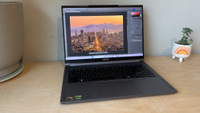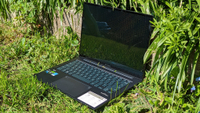The best laptops for graphic design, fully tested and recommended for every workflow
Boost your creativity and productivity with one of the best laptops for graphic design work.

If you're in the market for the best laptops for graphic design, you'll need a powerful, reliable machine capable of handling heavy loads from creative software with ample RAM and good battery life. This naturally comes at a price, so picking the right laptop for your needs is vital; we've got a guide to the requirements needed for a graphic design laptop to help you on your way.
✅ We are solely focused on what creatives need
✅ Benchmark tests based on real workflows
✅ We consult actual designers and creative pros
✅ Over 100 laptops tested over 10,000 hours in the last two years
But if you just want to get straight to it and learn about the best of the best, we've hand-selected the models in the list below based on our expert testing and reviews. We've conducted both benchmark tests and real-world projects (check out how we test laptops for graphic design as well as the testing section below for more details) to assess their suitability for creatives.
Right now, we think the MacBook Pro with the M4 chip is the best graphic design laptop, balancing ample power with a more approachable price tag than the M4 Pro model, complemented by a user-friendly design and excellent display. Prefer to work on a desktop? See our picks of the best computers for graphic design, and check out our guide to the best monitor for graphic design to complete your setup.

Erlingur has personally tested and overseen the testing of more than 100 laptops, PCs and tablets over the last two and a half years. He has worked on extensive testing and benchmarking processes to ensure we are putting the laptops through tests that truly nail what creatives need to do their best graphic design work. His favourite laptop brand is ASUS because they push the envelope, and led the charge for OLED touchscreens on laptops.
Quick list
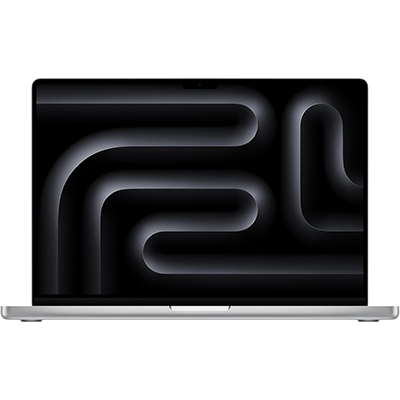
While not as powerful as the MacBook Pro 14 (M4 Pro, 2024), the standard M4 model is still more than capable, offering excellent portability and power along with ample battery life.
Read more below
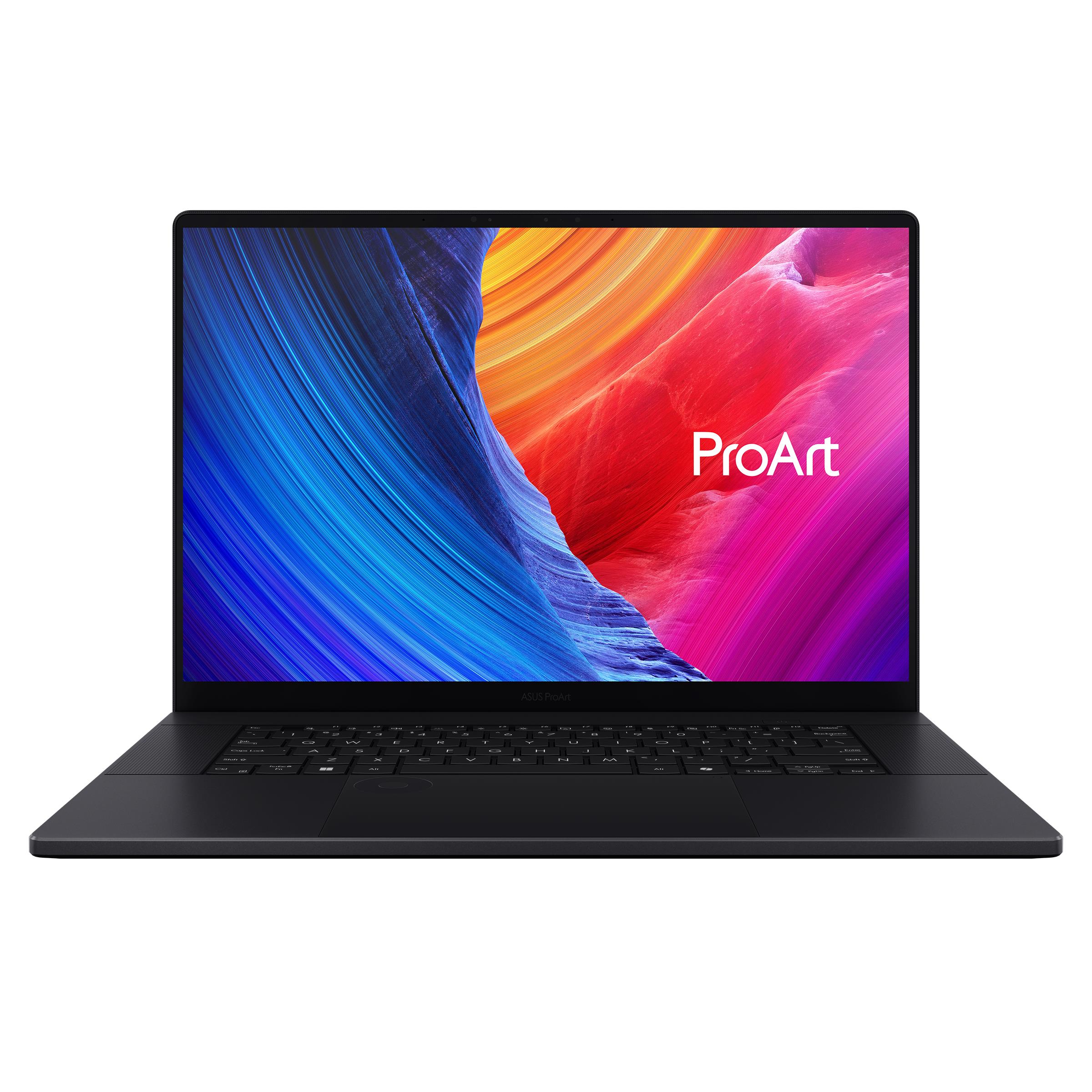
The ASUS ProArt P16 is a powerhouse laptop for creatives with an ultra-sharp touchscreen OLED display, impeccable performance, a much-improved battery life on the previous Studiobook, and its benchmark scores even outperformed the Macbook Pro.
Read more below
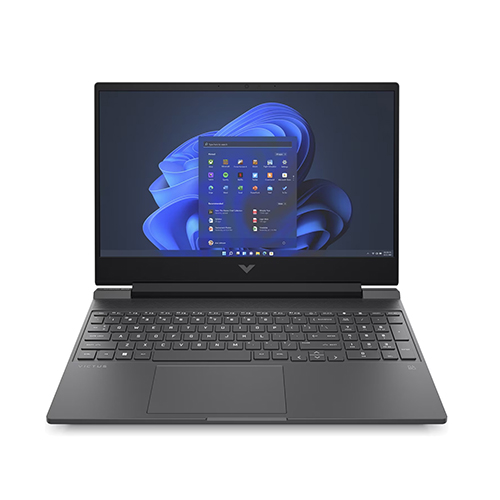
If you're on a tight budget, and you're happy to compromise on some top end power, this laptop will deliver enough power for most graphic designers. But the screen's colour is definitely a drawback, you may want a second monitor here.
Read more below
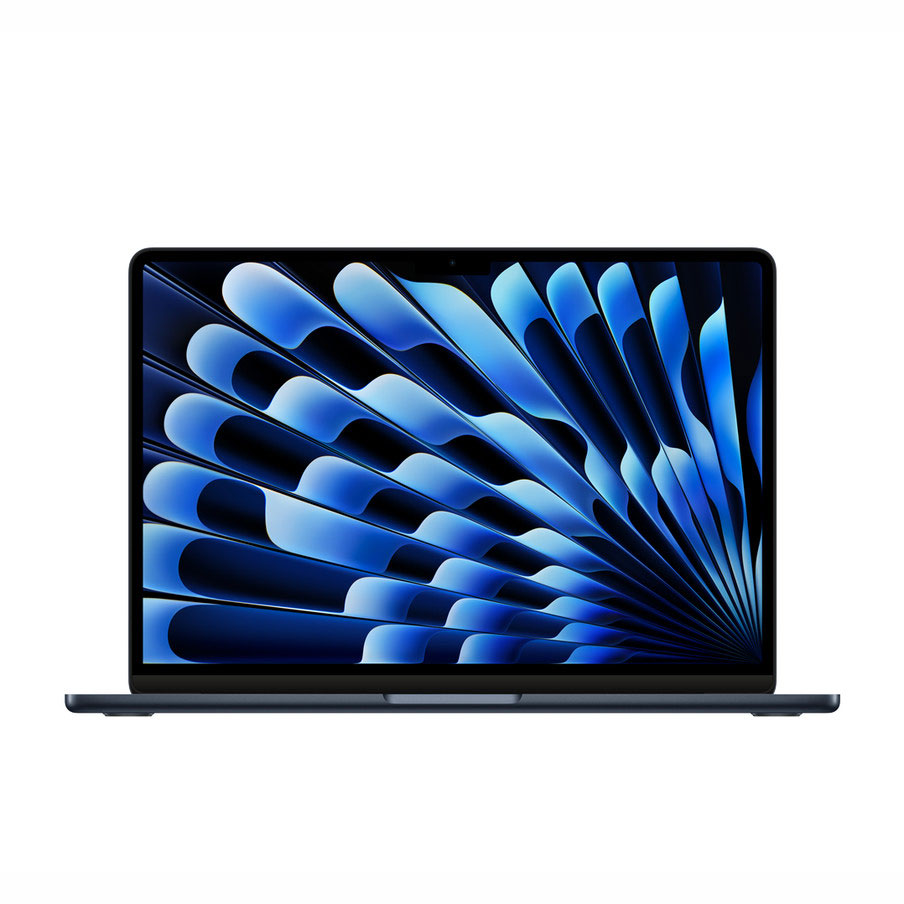
If you don't need the power of the MacBook Pro for intensive tasks like complex 3D rendering and 4K video editing, the Air offers everything you need. The latest model, with the M4 processor, is a major advancement over the M3.
Read more below

The performance of the MacBook Pro 16 (M4 Pro, 2024) blew our reviewer away: it's so powerful, it could easily replace a desktop workstation. That means it will run even the most demanding creative software quickly and efficiently, making it our top pick for graphic designers.
Read more below
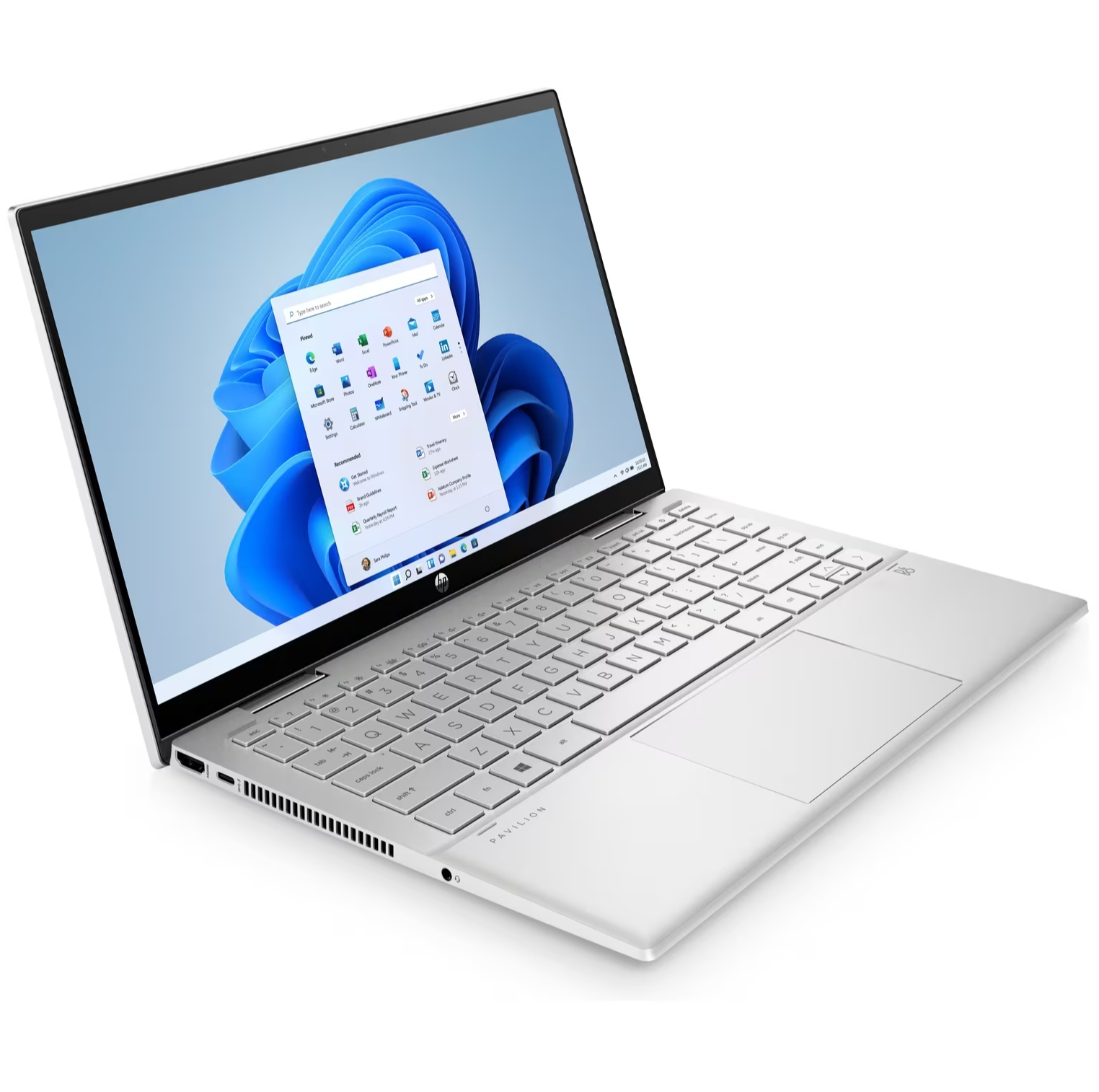
The glorious OLED screen is part of what makes this a top pick for graphic designers. It has 16:10 aspect ratio, and glorious colour accuracy. It comes in a massive 16-inch version, brilliant for those who want a true 2-in-1 laptop with space to draw.
Read more below
The best laptops for graphic design work
Best Apple laptop for graphic design

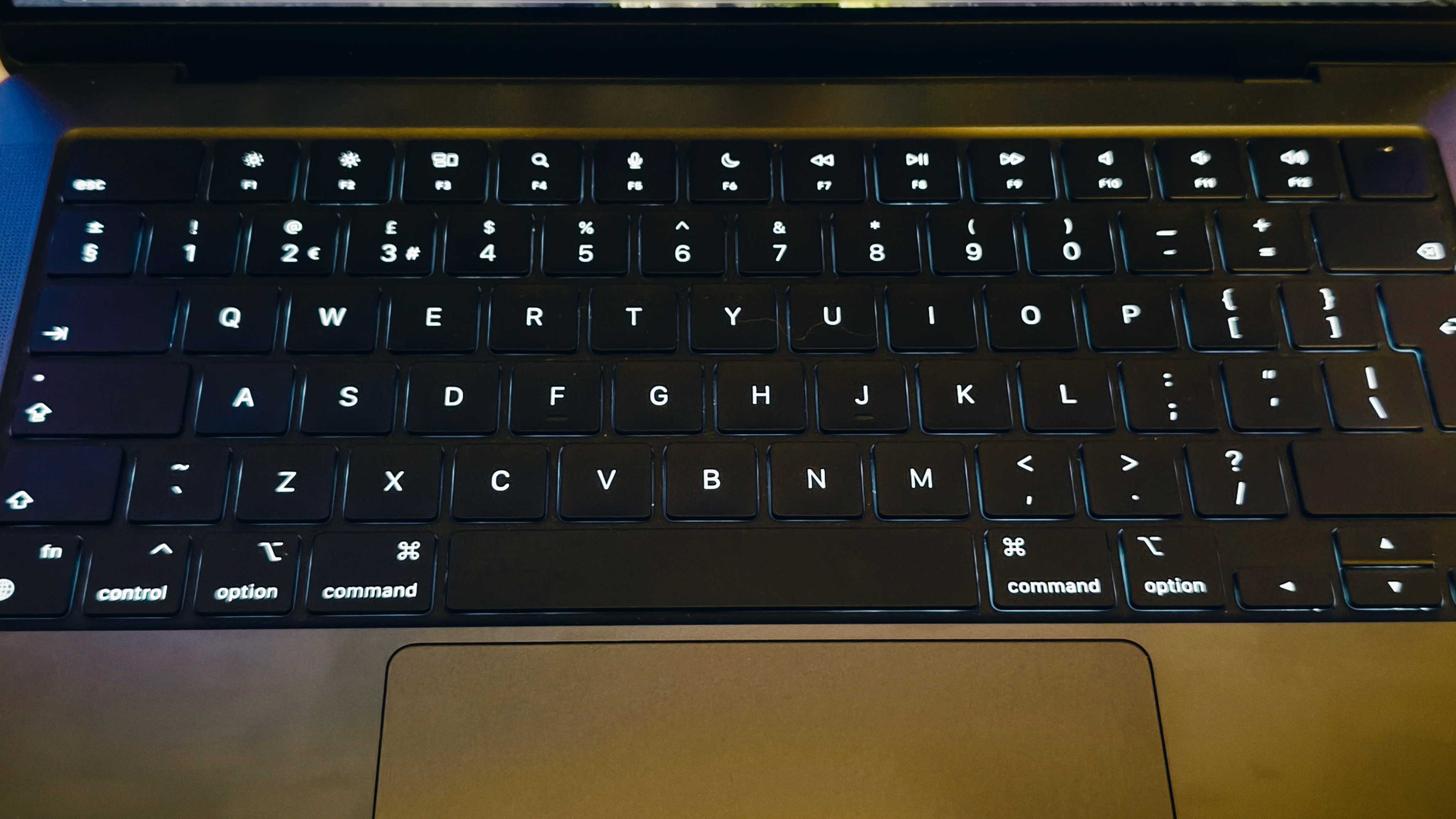

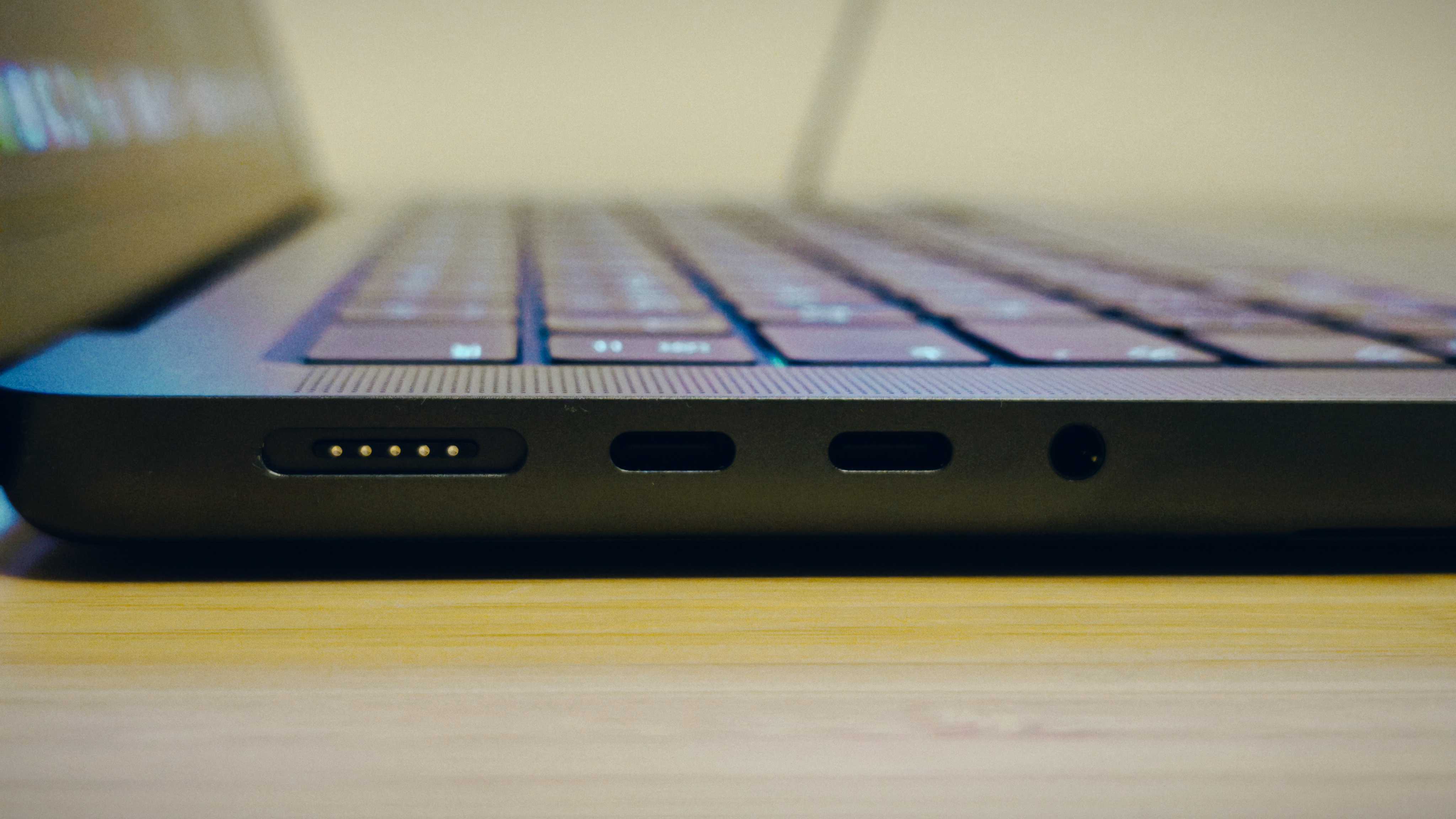
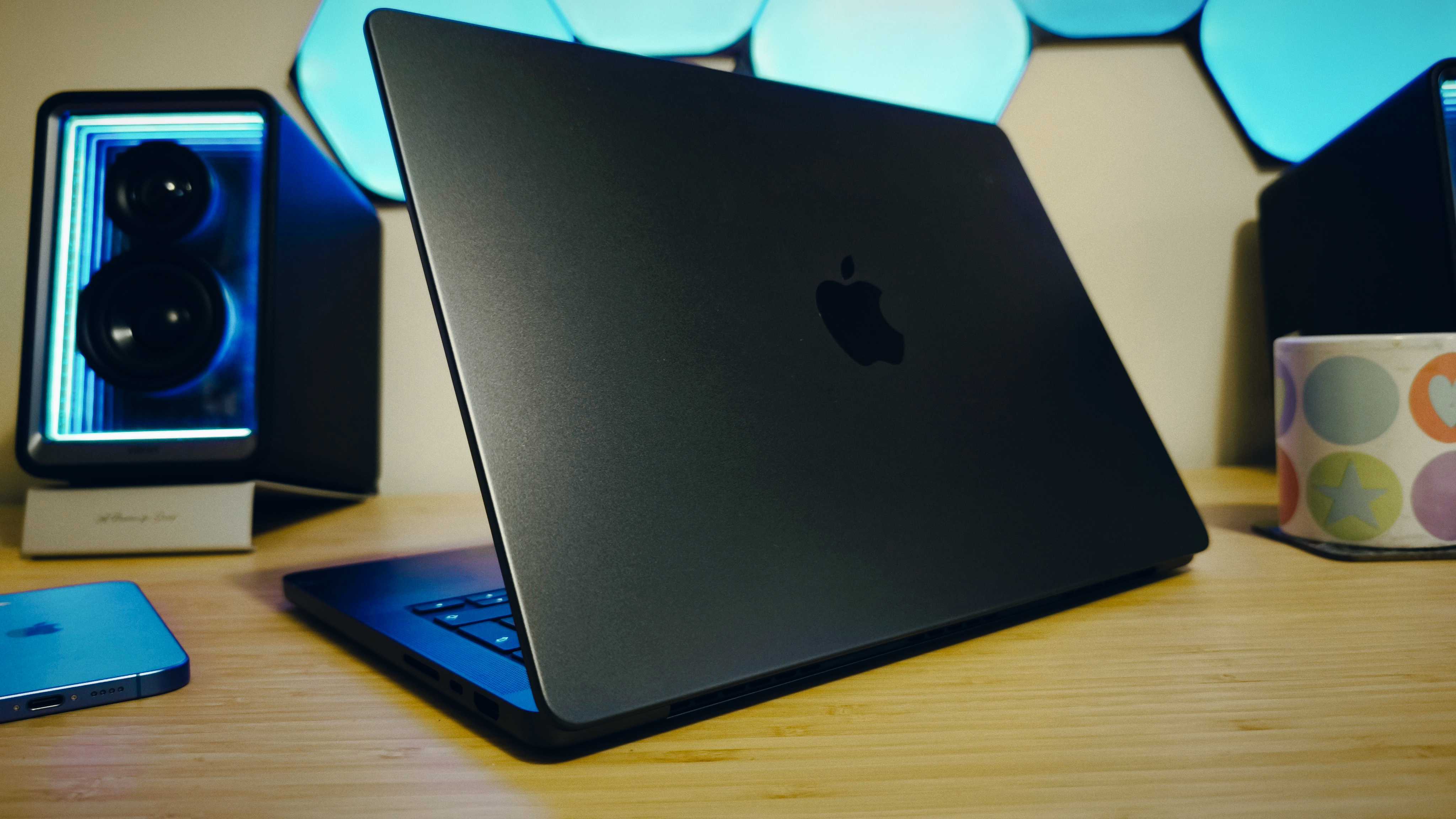
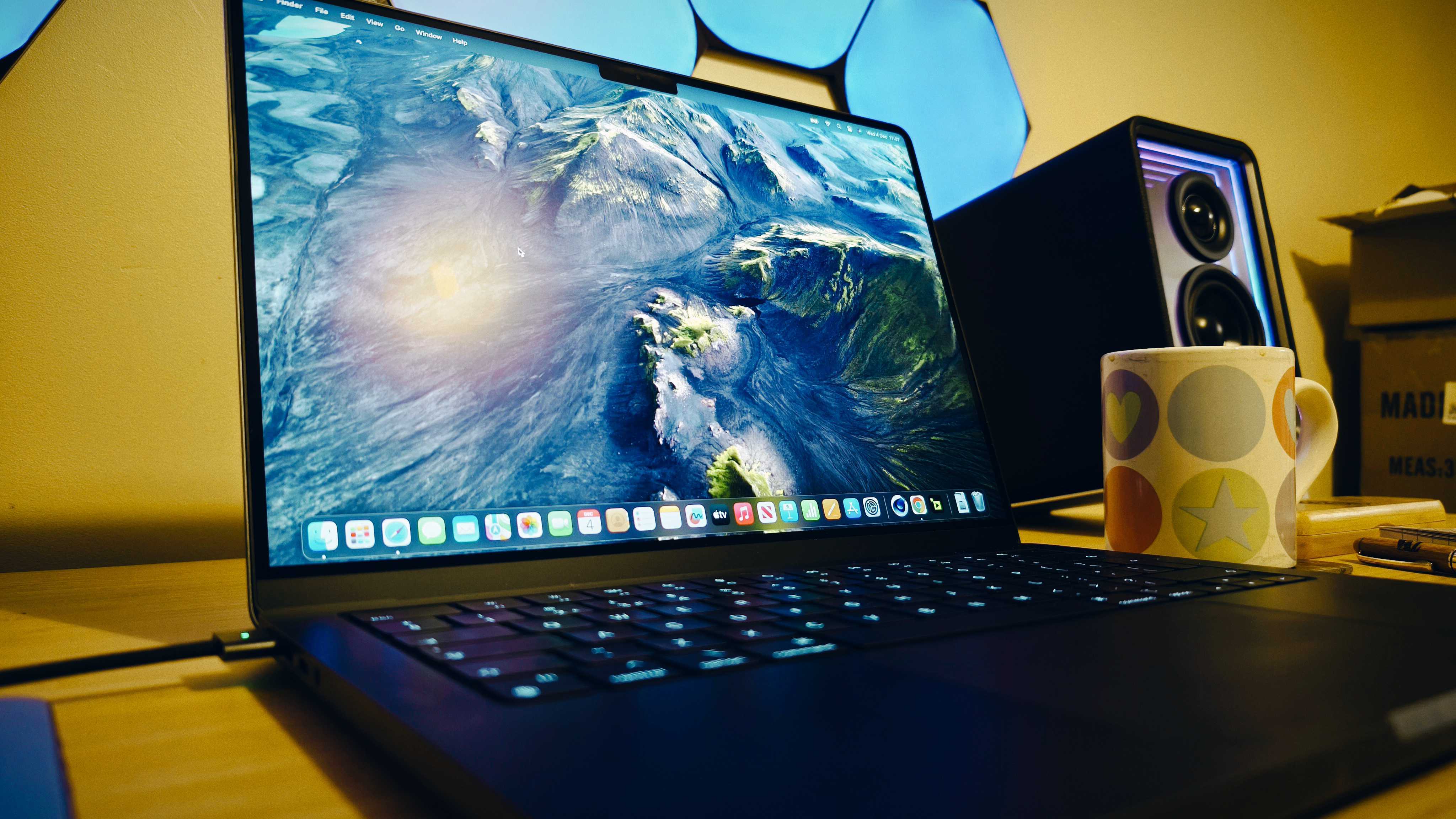
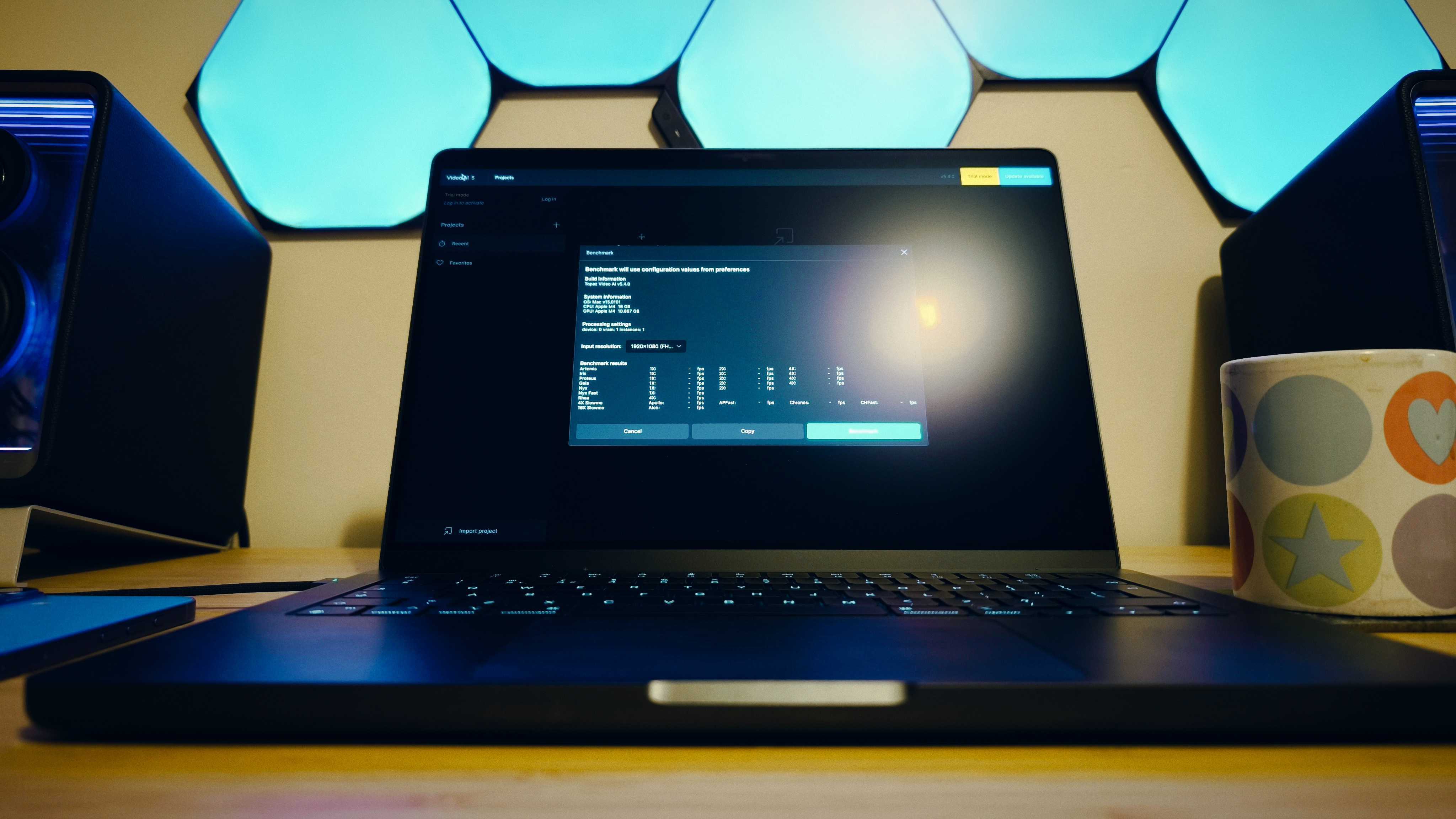
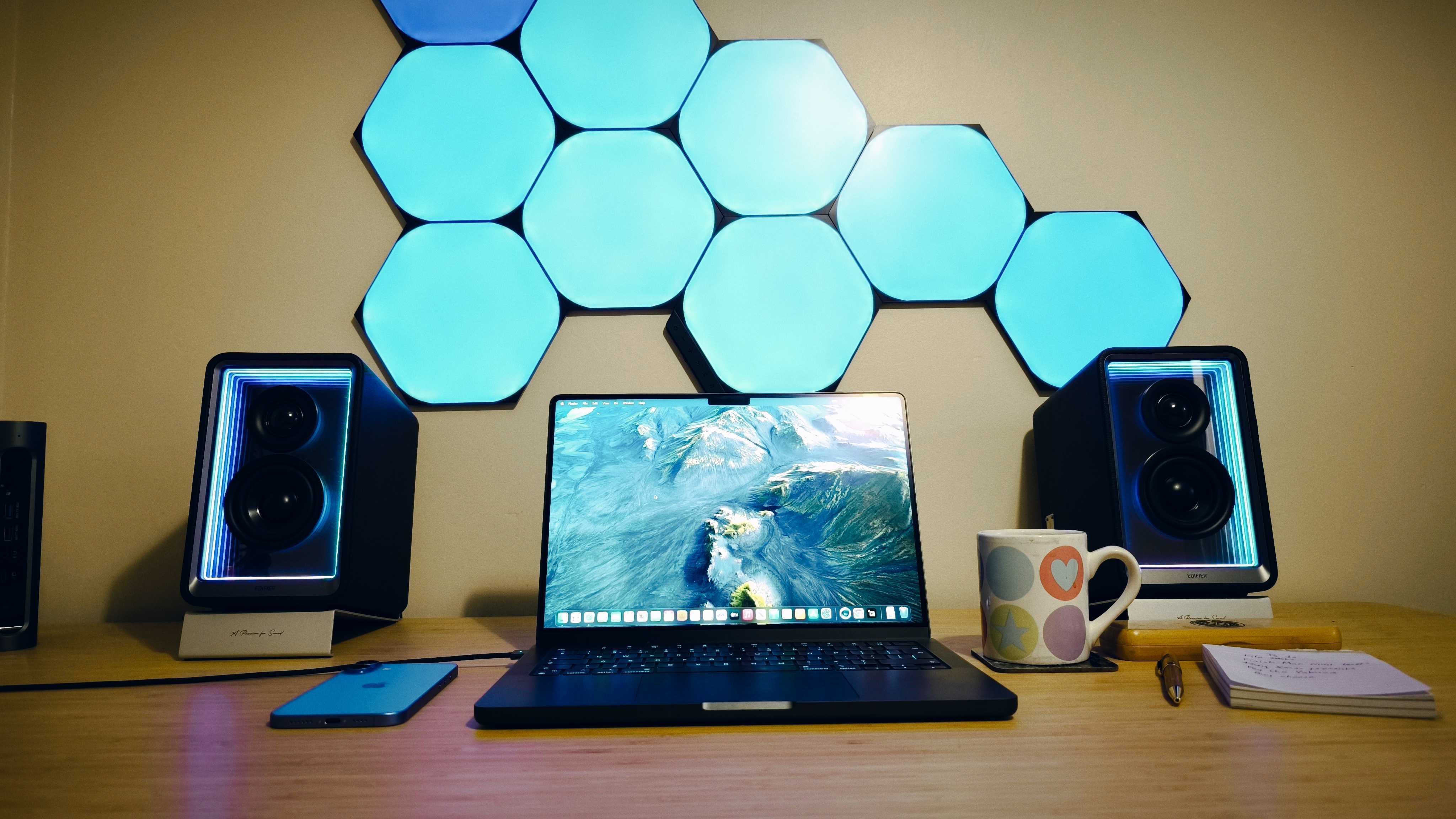
Specifications
Reasons to buy
Reasons to avoid
✅ You need a powerful device at a lower price: While still highly capable, it's more accessibly priced than its M4 Pro sibling.
✅ You mostly want to edit still images: If you don't need 3D rendering or more intensive tasks, the M4 model is plenty powerful.
✅ You prize build quality: As you'd expect from Apple, the build quality and materials are premium.
❌ You're on a tight budget: While it's the most affordable M4 MacBook Pro, it's still pricey.
❌ You need Windows-specific software: Not all tools are optimised for macOS.
❌ You want to upgrade your machine: There's no way to open and upgrade this integrated laptop.
🔎 MacBook Pro M4 is a solid base model, with great performance, fantastic battery life and a beautiful display. However, it's ability to tackle more power-hungry tasks like 3D rendering is disappointing. ★★★★½
What you need to know: The new Apple MacBook Pro 14 (M4, 2024) is a well-built, efficient and high-performing laptop for creative pros. That is, so long as you're working with still images; if you deal with 3D modelling, heavy video rendering or animation, the base-spec M4 chip isn't quite going to fit the bill; you're better off with the MacBook Pro 16 (M4 Pro, 2024) later in this list should that be the case. Or see our lists of the best laptops for 3D modelling.
Design: As is Apple's way, this MacBook is sleek, svelte and securely built, with a robust frame and premium build materials to boot. looks fantastic, with a space black finish offering a premium feel. It's still lightweight, meaning it's great for digital nomads, packing a beautiful and vibrant Liquid Retina XDR display well-suited to design work.
Performance: We're growing accustomed to being very impressed by the performance of Apple's latest laptops, owing largely to the included M-chips. The M4 might not be as powerful as its M4 Pro sibling, but still scored impressively in our benchmark tests, with strong multi-core CPU results for the price bracket. Unfortunately, GPU performance is where the M4 starts to flake out, so if you're looking to do 3D modelling on your new graphic design laptop, you're better off opting for number 5 on our list.
Battery life: We were astonished by the battery life of the MacBook Pro M4 on test, watching in awe as it sailed through 22 hours of video streaming. That ensures at least a working day of battery life under higher pressure, though for especially demanding workloads you might be reaching for the charger before the day's out.
Price: The MacBook Pro M4 base model starts at $/£1,599, but naturally that price only increases if you want more than the base 16GB RAM, 512GB SSD storage space or get the nano-textured display.
Read more: MacBook Pro (M4, 2024) review
Attributes | Notes | Rating |
|---|---|---|
Price | Expensive, but a solid value proposition | ★★★★ |
Design | Excellent build quality | ★★★★★ |
Performance | Great for still images, limited capability for 3D and VFX work | ★★★★ |
Battery life | Very impressive longevity | ★★★★★ |

The Apple MacBook Pro (M4, 2024) is incredibly well built, packing a beautiful display and a bunch of ease-of-use features for anyone, but 3D and moving-image processing is disappointing, so if you work with 3D, heavy graphic design or video rendering, you need to step up to the M4 Pro or Max chips.
Best Windows laptop
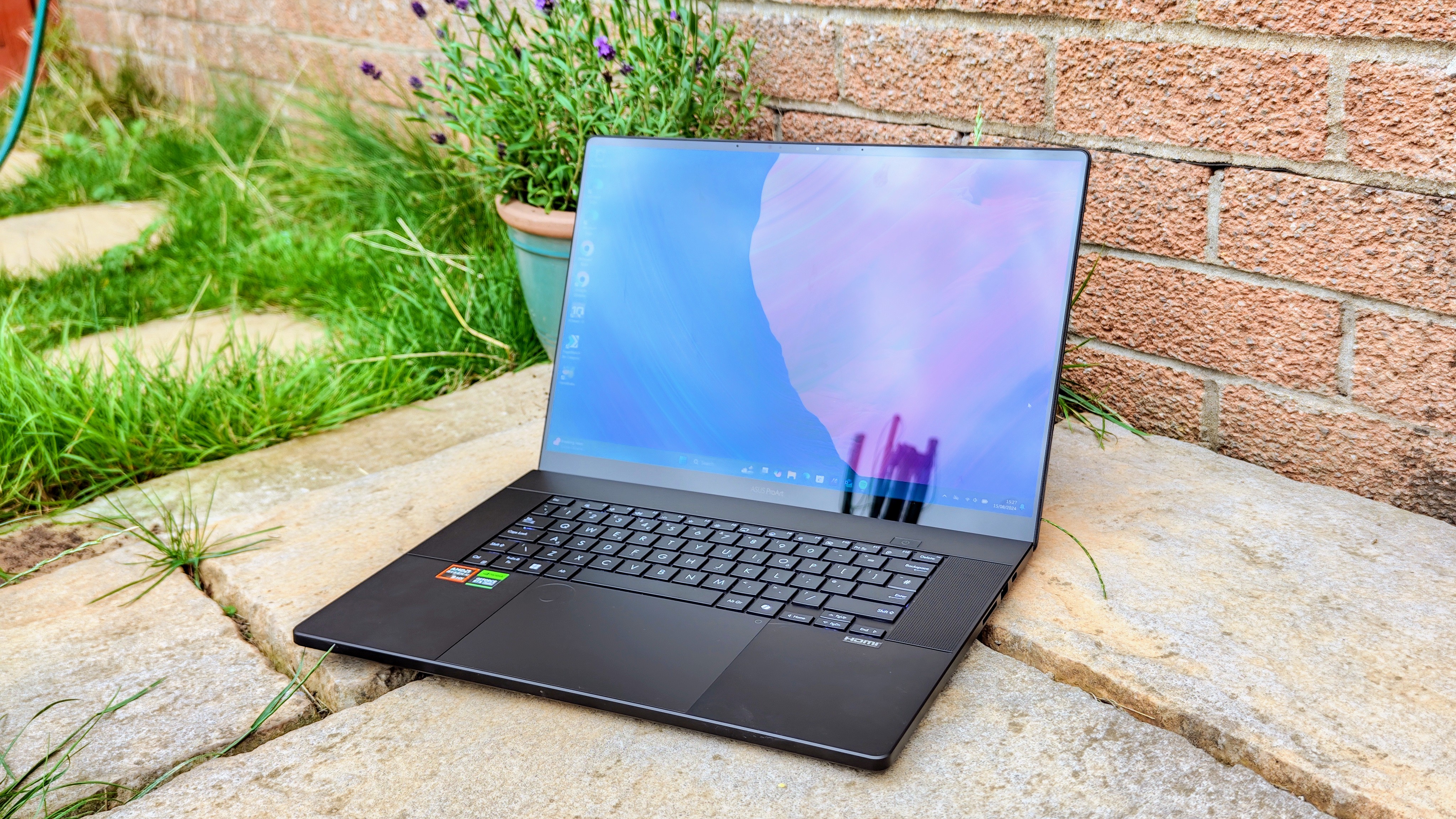
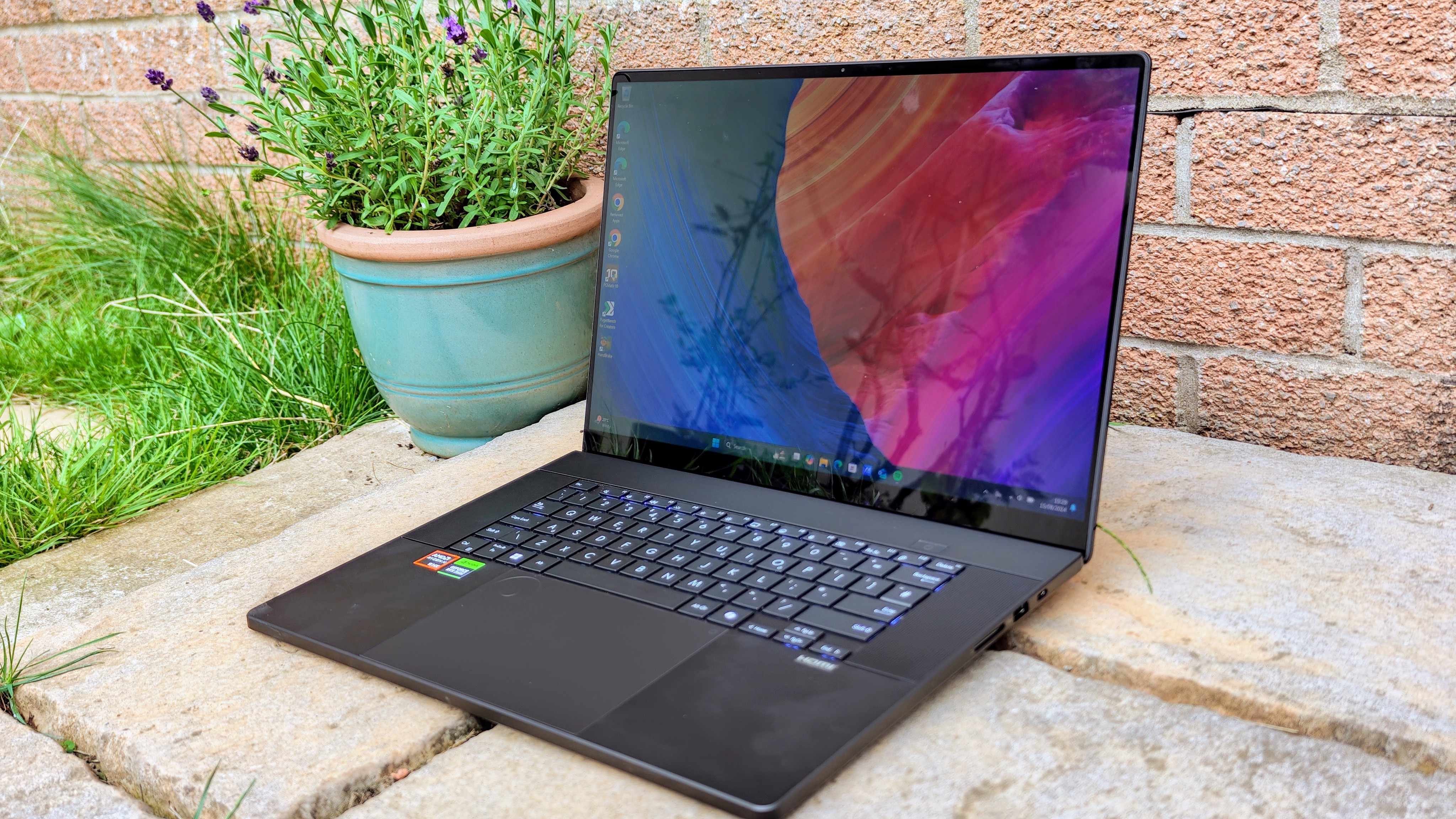
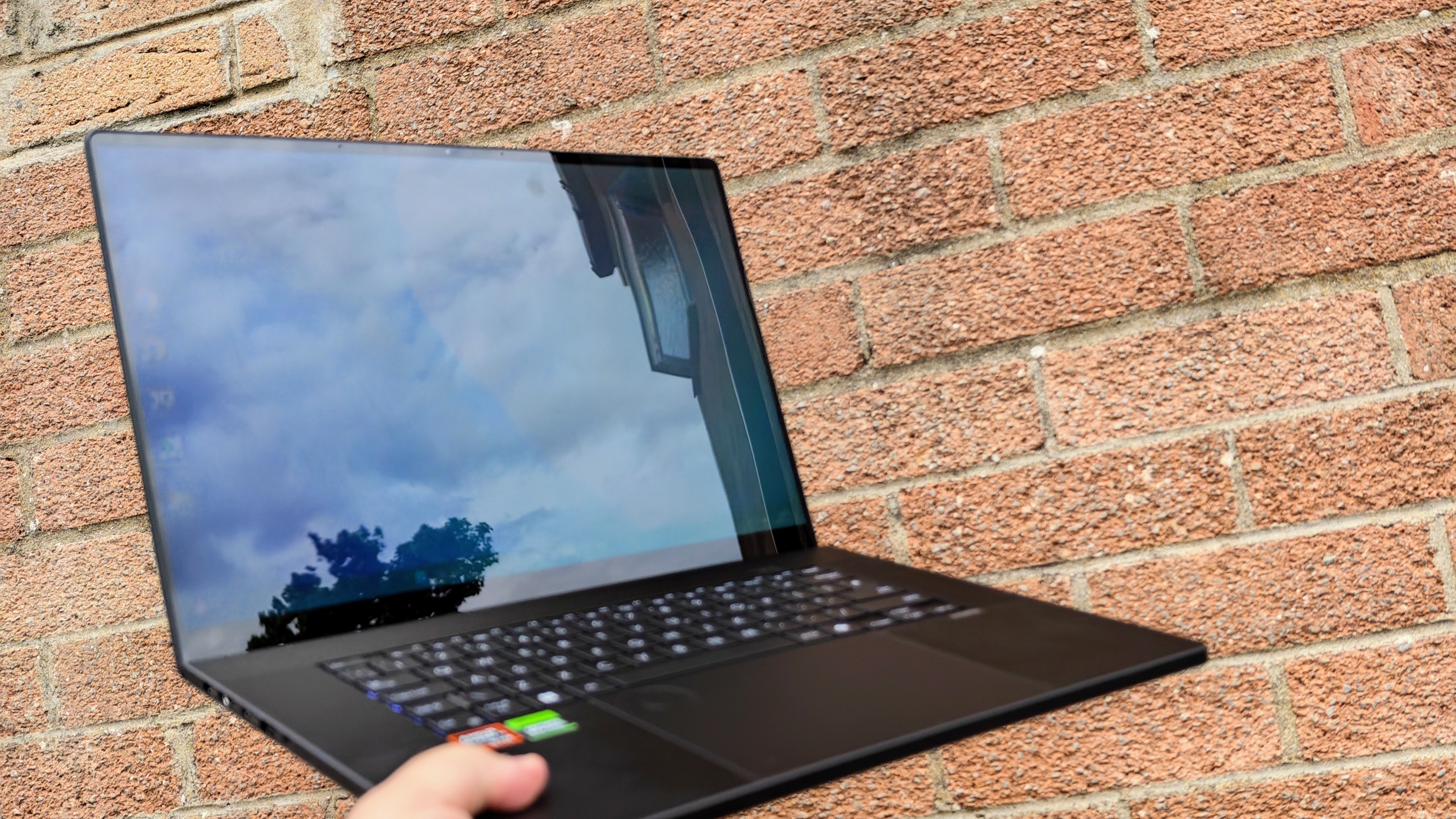
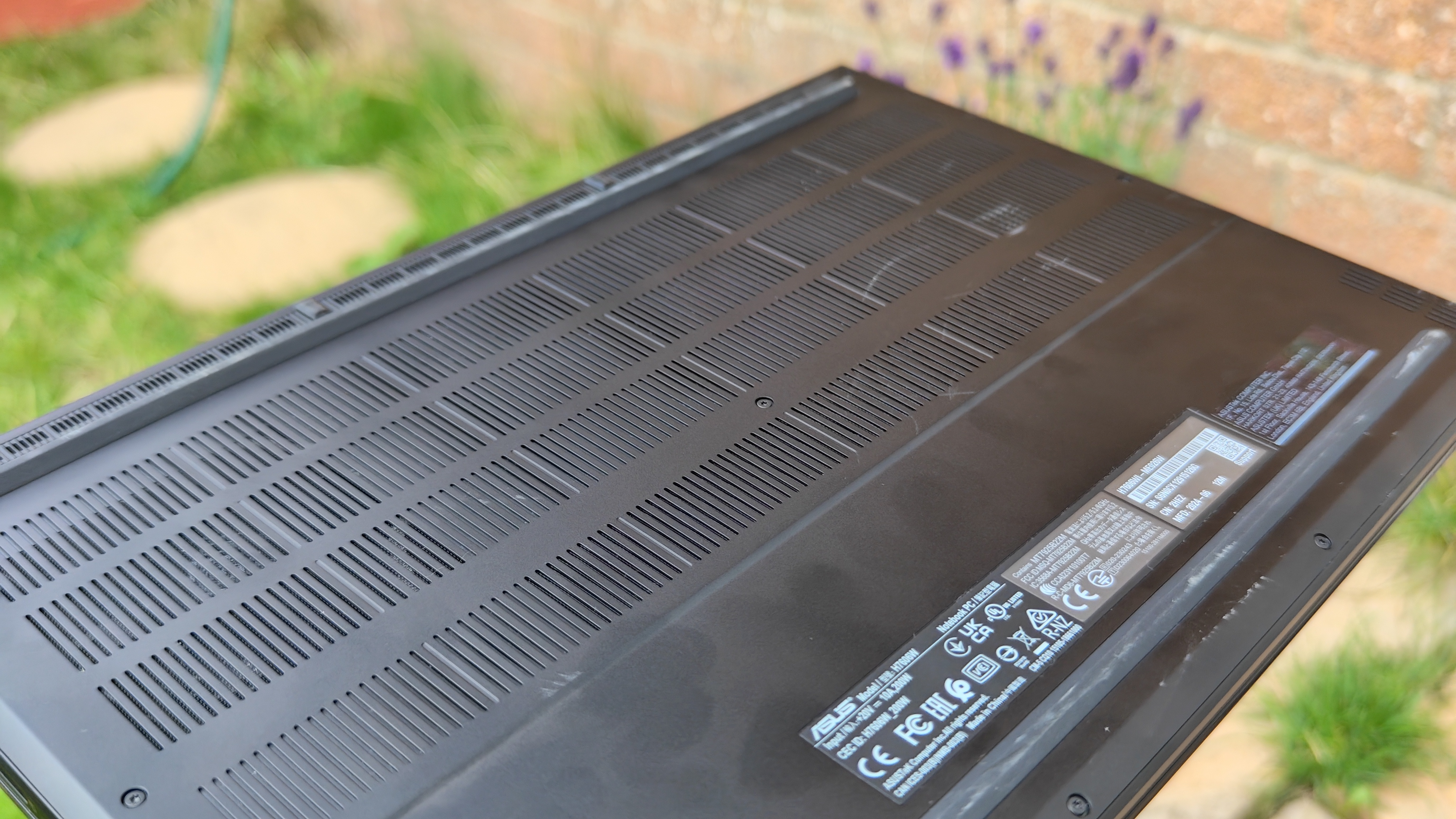
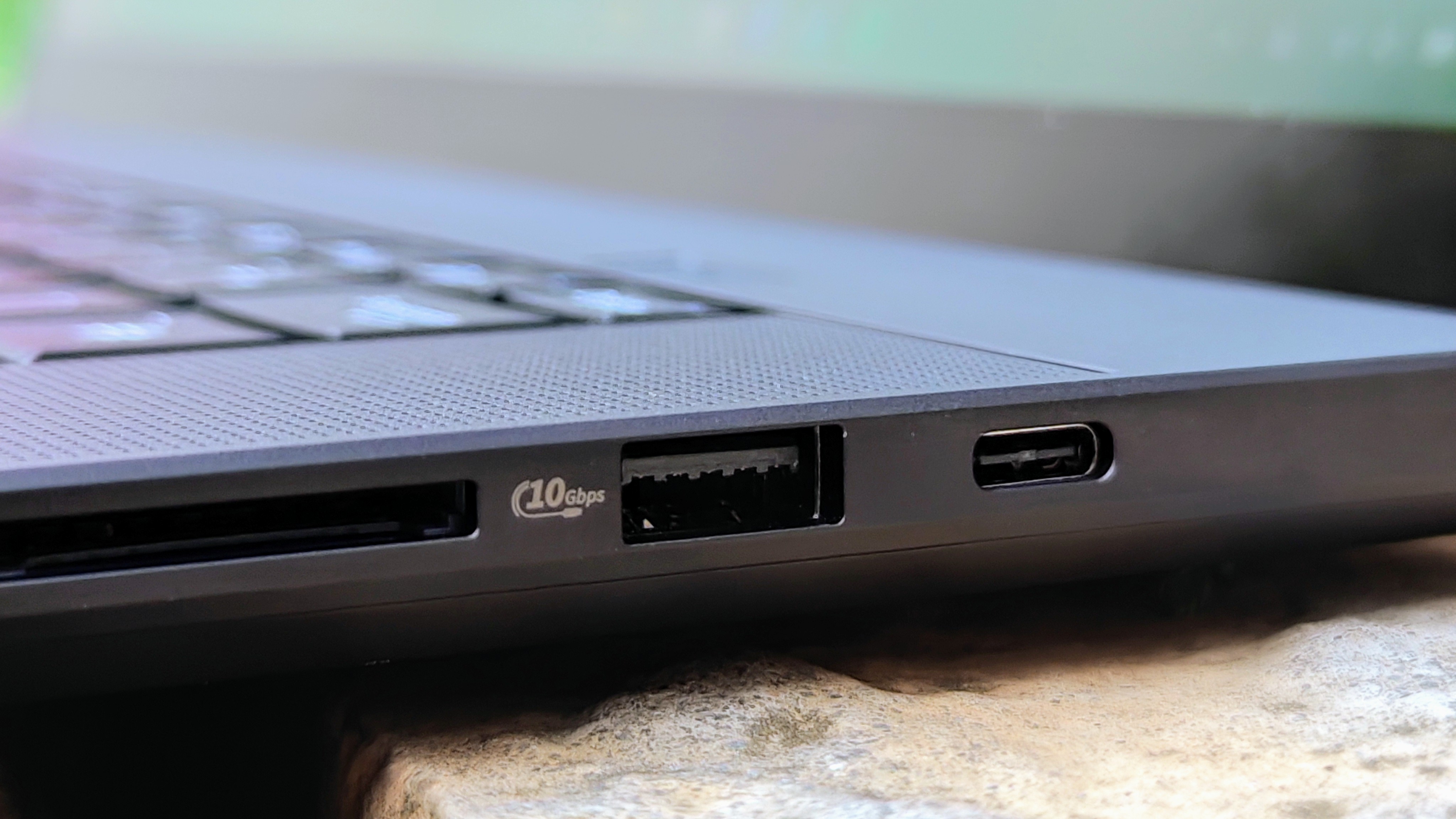
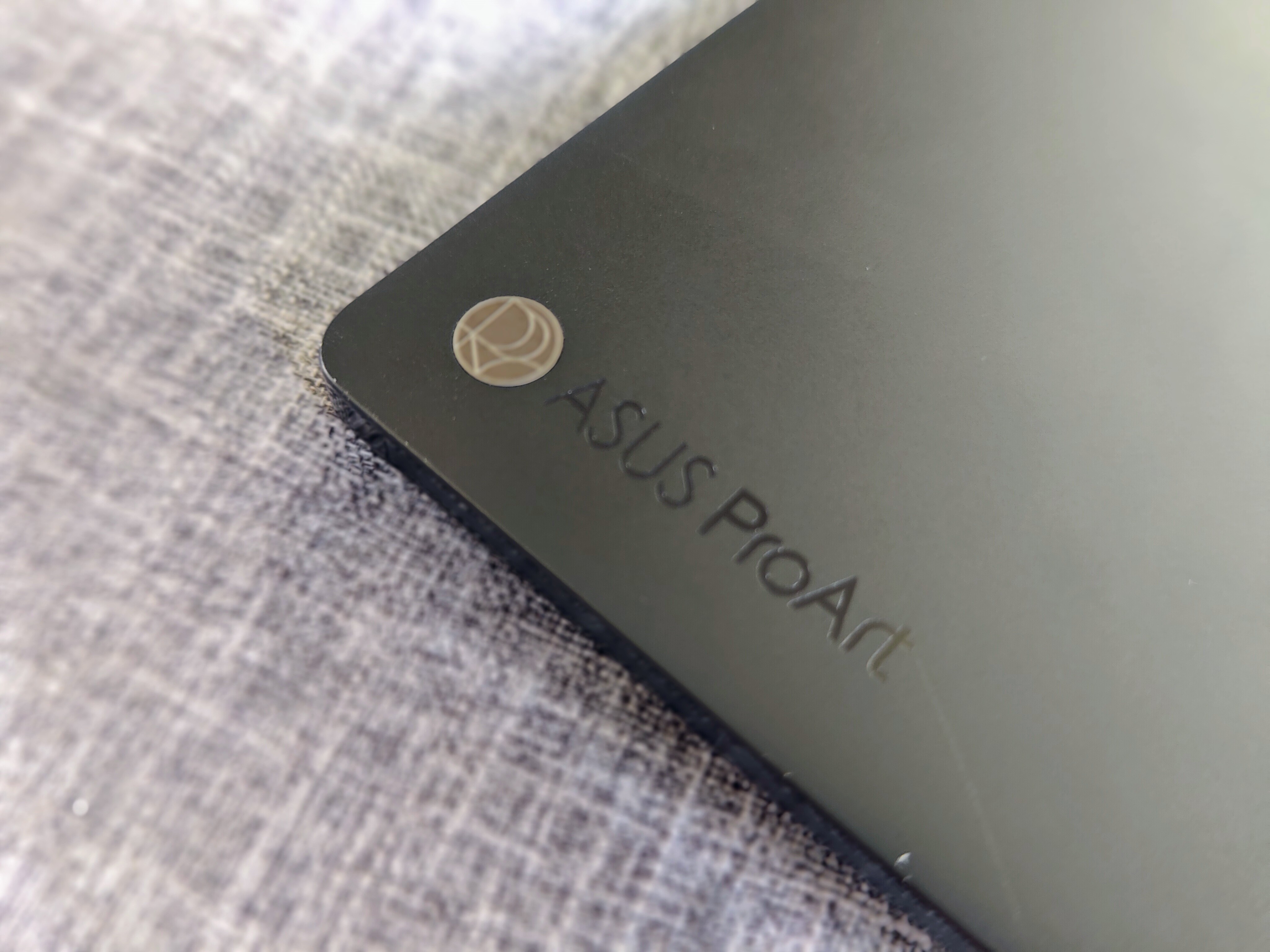
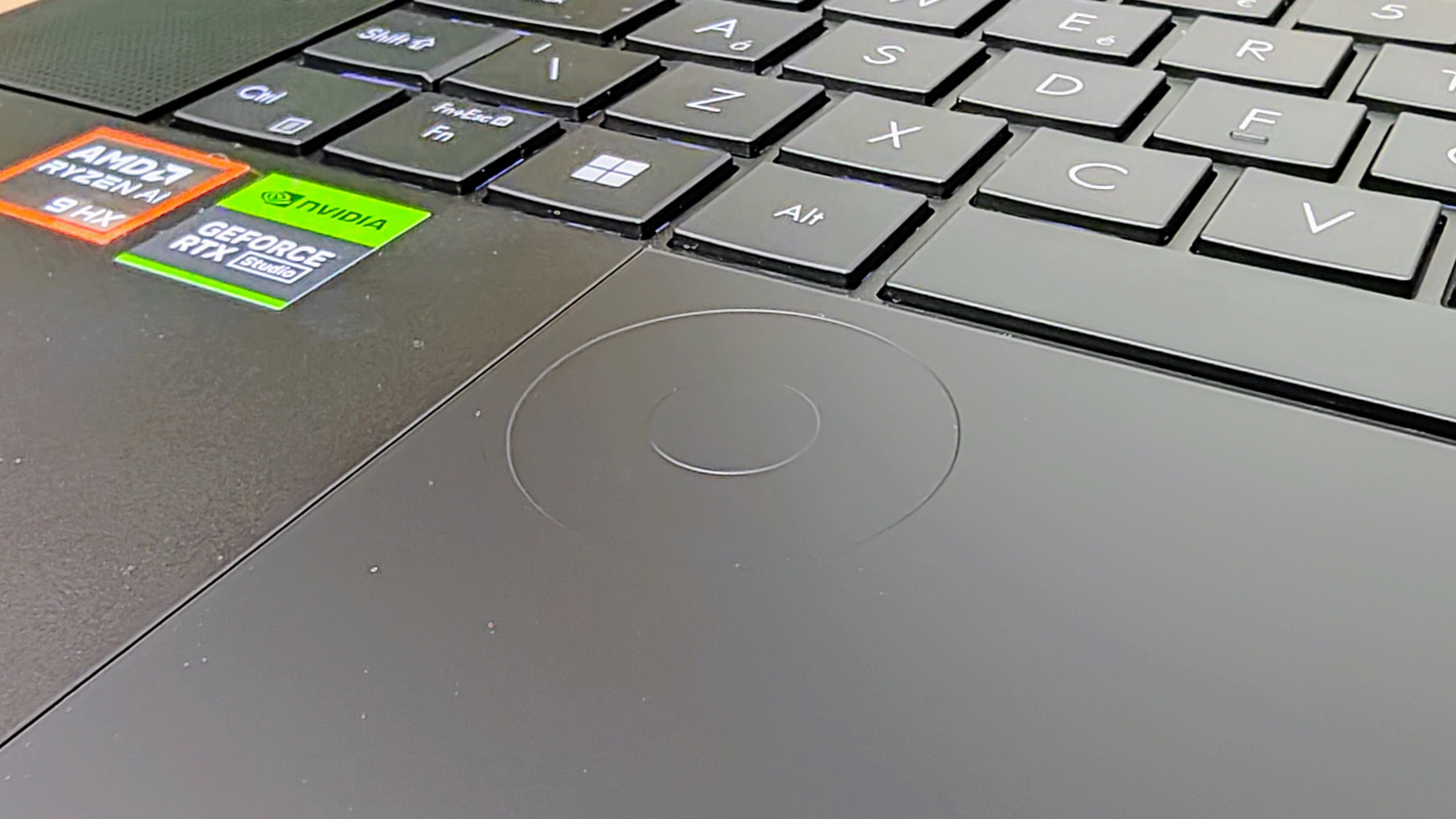
Specifications
Reasons to buy
Reasons to avoid
✅ You want Windows: If you don't like MacBooks, or working in macOS, this is our top pick as it runs heavy loads with ease.
✅ You want an OLED display: The ProArt screen is a thing of beauty, one of the best and sharpest we've seen – ideal for graphic design.
✅ You like productivity features: It's a laptop set up for creative work and comes with add-ons like a built-in dial you can customise for apps and tasks.
❌ You need super long battery life: The ASUS ProArt P16 has a much-improved battery life, and we got 10 hours and 23 minutes out of it. However, this is still a little below the MacBooks.
❌ You're on a budget: With a starting price of $1,999 this isn't cheap but you're paying for a lot of features and power – if you need less power, this isn't for you.
❌ You like a traditional keyboard: The keyboard is a bit strange – full-size squeezed into the clamshell – so some buttons aren't where they should be.
🔎 Asus ProArt P16 is a powerhouse with an array of useful features, plus a glorious OLED touchscreen. It's pricey but the studio-ready performance makes up for it. ★★★★½
What you need to know: The Asus ProArt P16 is a beast of a laptop, the flagship of ASUS' new ProArt range for creative professionals, and it proudly succeeds last year's mighty Studiobook as a powerful, feature-rich, studio-ready leader to rule the varied laptop tribes beneath it. It can handle any creative task you throw at it, but I believe that this laptop is the mightiest among laptops, even beating out Apple's MacBook Pro. It wins against the Lenovo Yoga Pro Gen 9 (our best AI laptop pick) thanks to its better screen, and the ProArt Creator Hub software suite, which, while it won't replace your software of choice, is a nice addition.
Design: The ProArt P16 is near-identical to the previous year's Studiobook but not quite as pretty as other ProArt models we've reviewed. It has a 16-inch OLED screen, a large touchpad and a well-spaced, responsive backlit keyboard, and of course the the ASUS Dial which is integrated into the pad now instead of being a separate physical dial, used as a programmable function. Note: It's 300 grams lighter and got a more powerful AMD NPU than the Lenovo model, plus it's got better Bluetooth, an SD Express card reader and it's lighter.
Performance: Our benchmarks show P16 is capable of effortlessly loading and running several demanding creative software and applications at the same time, and the OLED touchscreen also performed impeccably during our testing as well, providing 396 nits of whole-screen brightness. Though we did find that the touchscreen is very smudge-prone, so keep your fingers clean!
Battery life: ASUS has improved the battery life dramatically with this latest model, and we managed to get 10 hours and 23 minutes out of it during our video loop test. Pretty impressive.
Price: You won't find a more capable pro-level laptop for graphic design work under £/$3,000 than the ProArt P16. We found that its benchmark scores in many cases rival (and sometimes outdo) the near-$4,000 MacBook Pro M3 Max.
Read more: Asus ProArt Studiobook P16 review
Attributes | Notes | Rating |
|---|---|---|
Price | Expensive but worth it for serious users | ★★★★★ |
Design | Gorgeous OLED touchscreen and great feature set | ★★★★½ |
Performance | All the power you could ever need | ★★★★★ |
Battery life | Much improved with over 10 hours | ★★★★ |

The ProArt P16's amazing display will be perfect for graphic designers (touchscreen and lots of grunt inside). I spent three weeks with one, putting it through heavy benchmark tests so I should know.
Best budget laptop
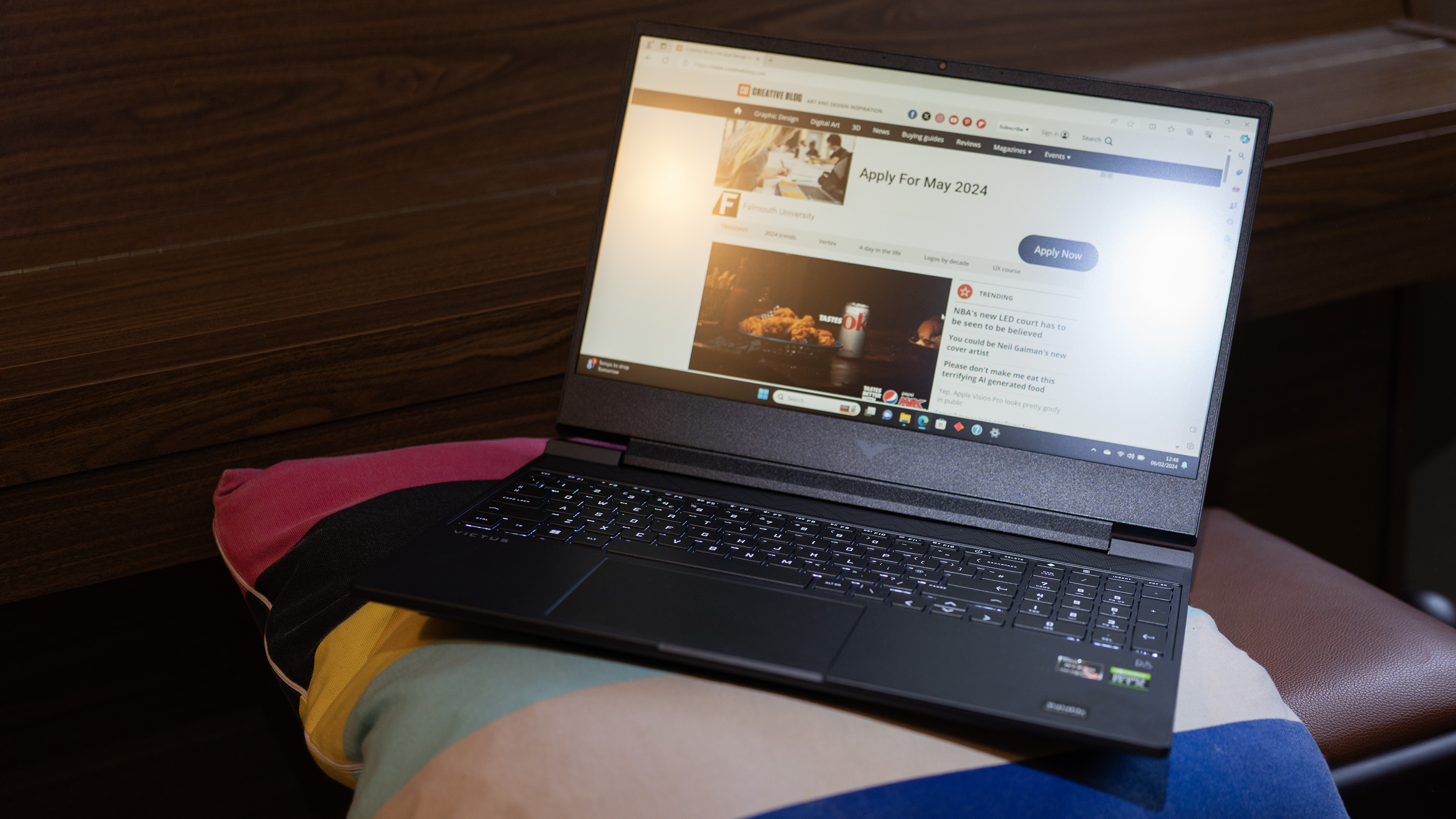
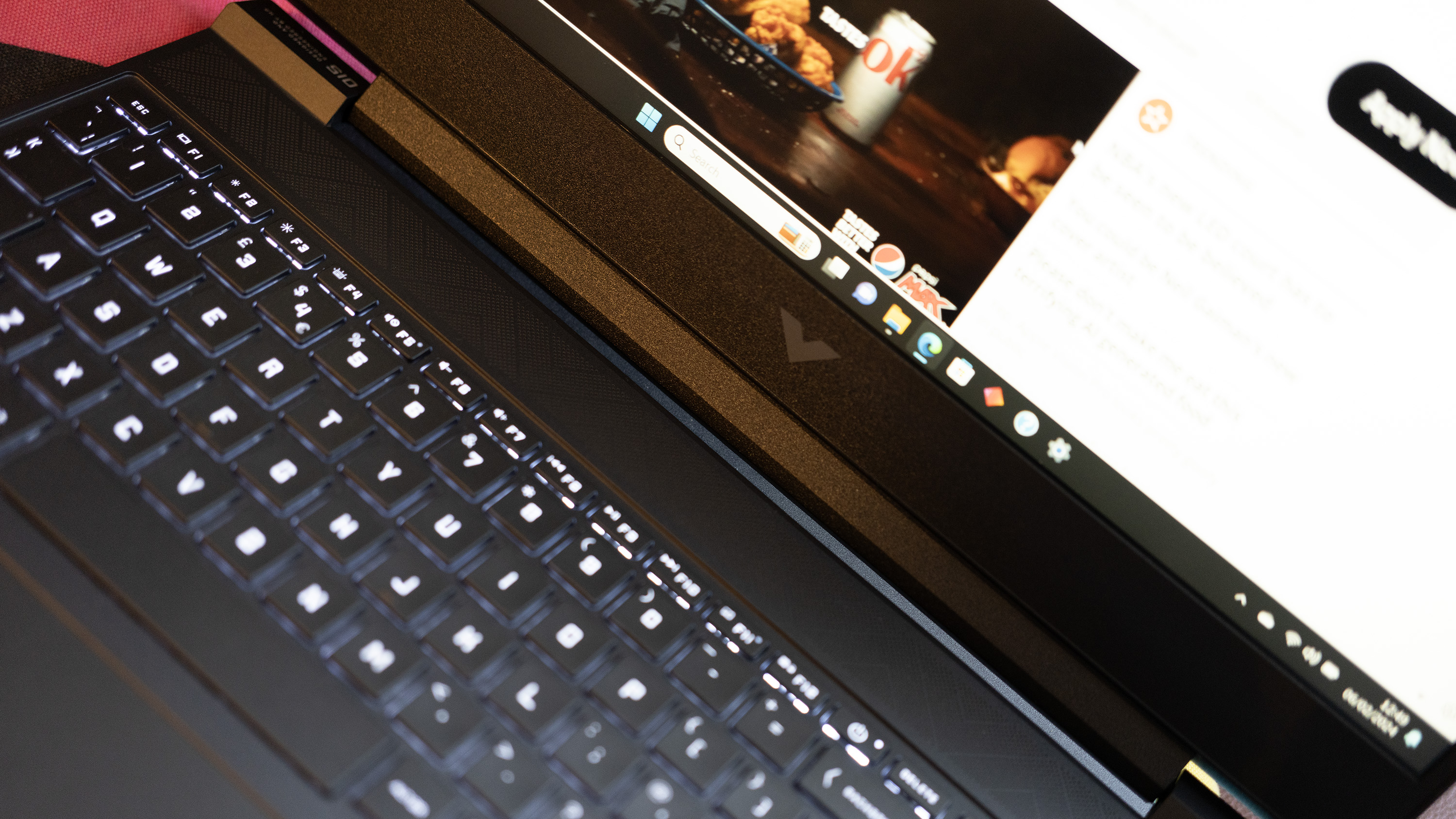
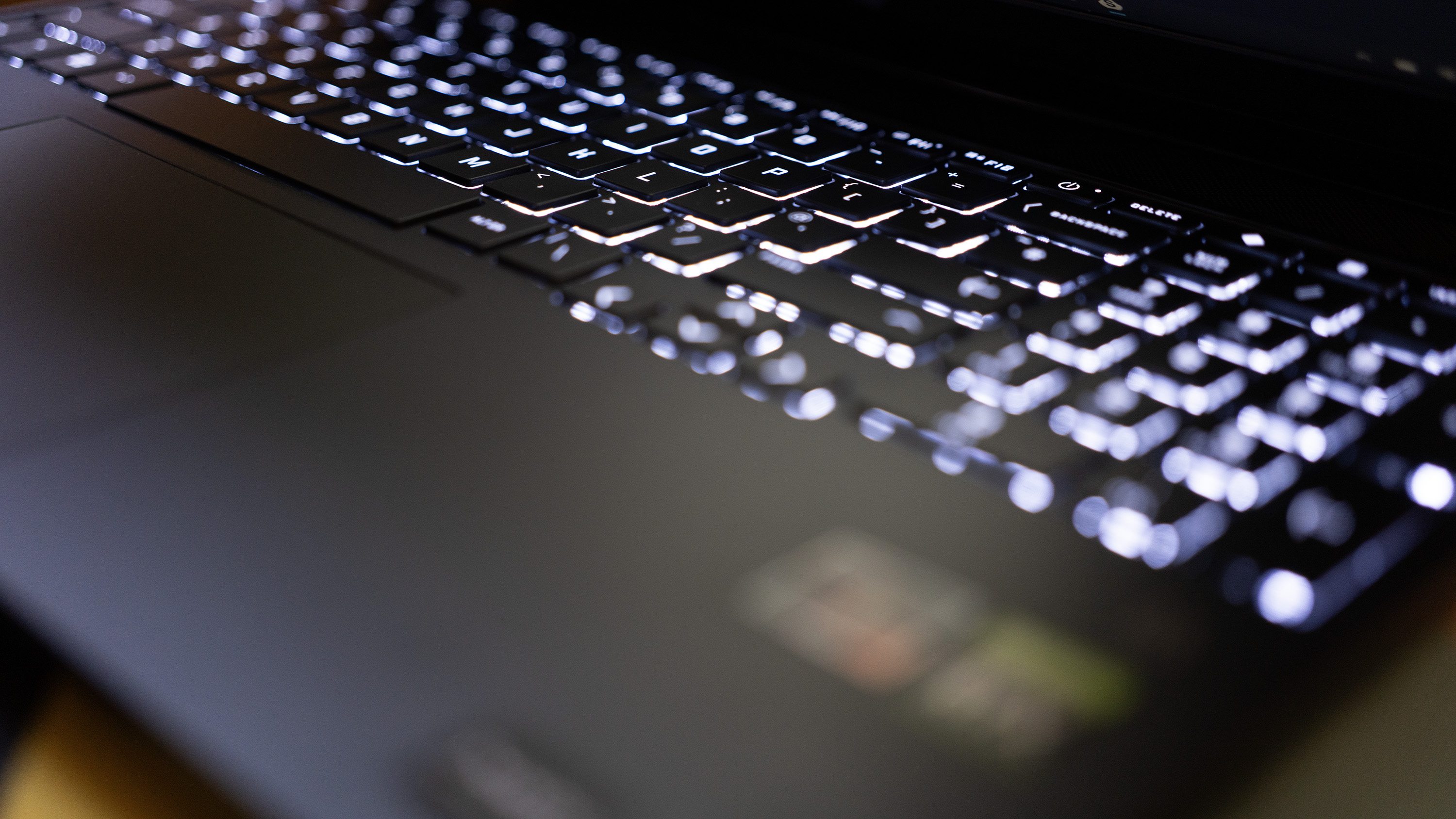
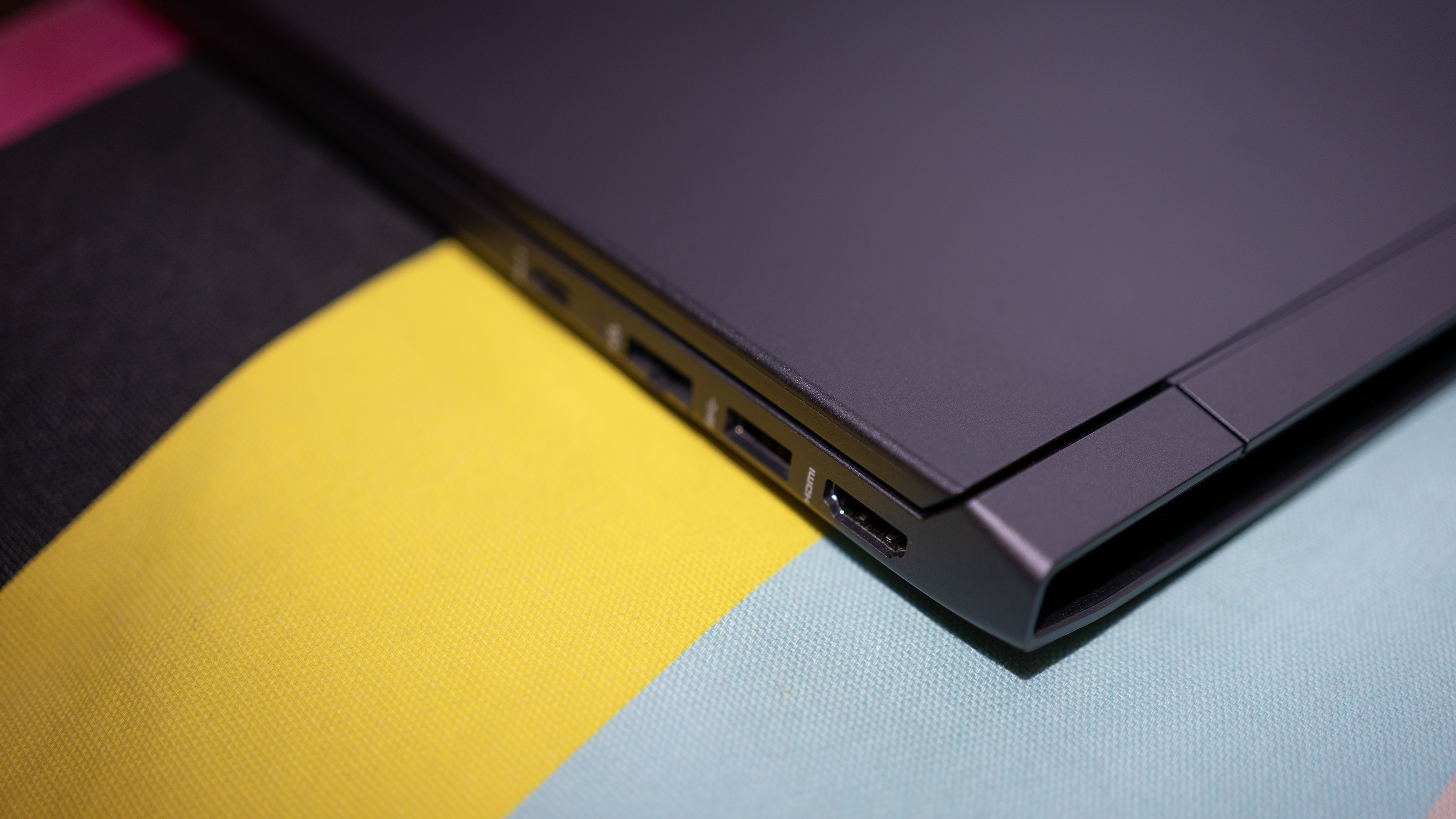
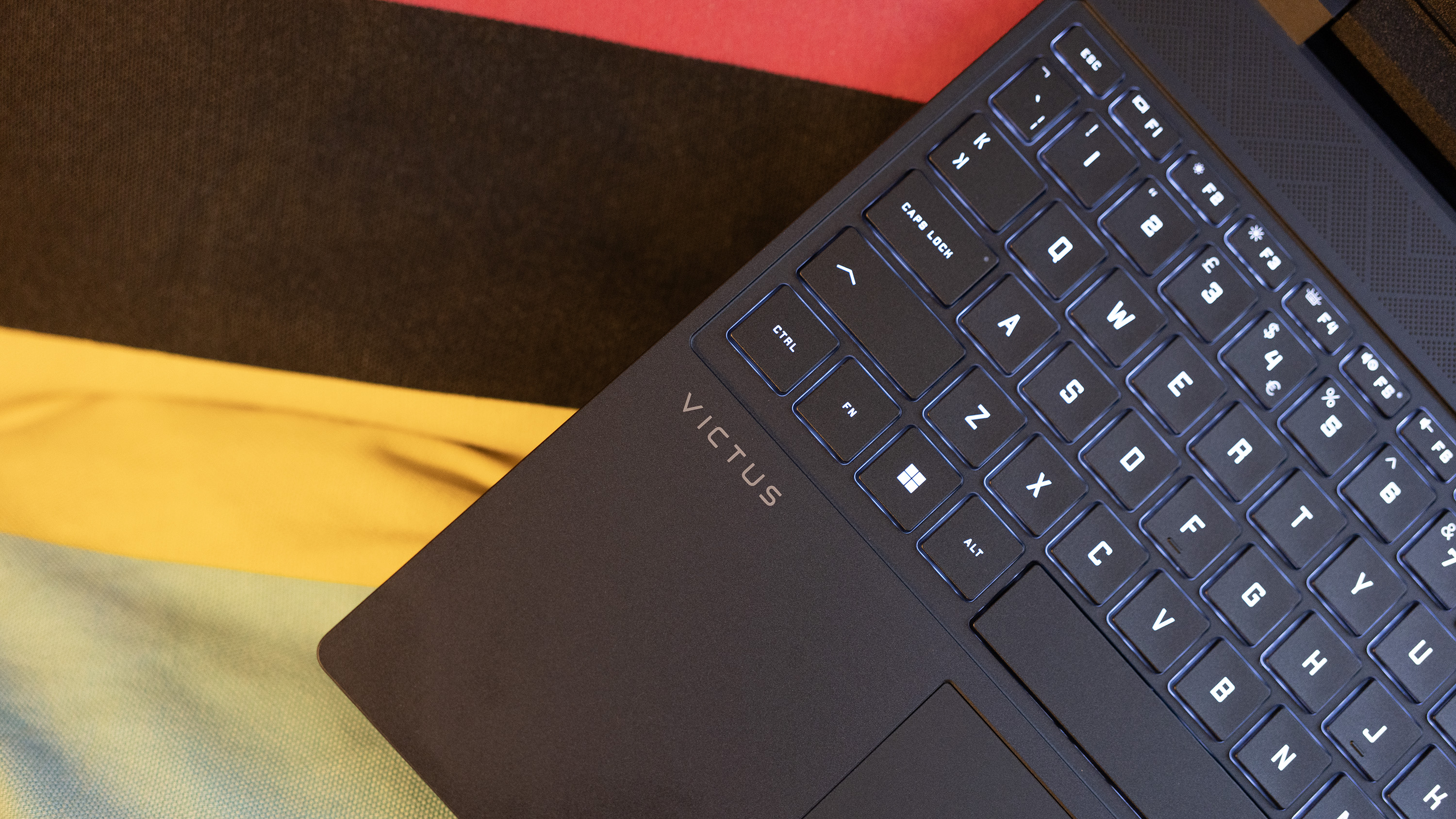
Specifications
Reasons to buy
Reasons to avoid
✅ Price is your main consideration: There are compromises here, but the price makes up for them... to a point.
✅ You have a medium workflow: 8GB of RAM isn't tons so this isn't for a heavy taskload, but it will serve the aims of graphic designers working with a light-medium workflow (some advanced Photoshop features will struggle).
✅ You have external storage: This doesn't come with enough storage for most pros, so you'll want to back up with something external.
❌ You have a tight budget: You can get this laptop for under £700, which is actually pretty reasonable for the performance.
❌ You integrate heavier tasks: If you use a lot of AI capability in apps, or you use RAW files, this won't work for you.
❌ You want something new: This is an older model, and so isn't exactly future proof.
🔎 HP Victus 15 is an older laptop that is showing its age. However, its benchmarks show that for the price it is a decent budget option for graphic designers. We gave it three stars at the time of review, when it was more expensive, but at its more recent pricing we'd bump up to ★★★½ if budget is most important to you.
What you need to know: It's impossible to find a true graphic design laptop for what 'budget' means in other contexts. In order for it to properly do the job, you need certain minimum specs. We did have a Chromebook in this spot, but after talking to graphic designers we realise cloud-based working is never going to be ideal for a professional. We think this laptop offers a balance of price and specs, which will work fine for the majority of workflows. If you need more power, you'll simply have to pay (or go refurbished).
Design: An understated chassis houses a 15.6-inch display. The screen is okay – probably the biggest compromise of the machine because the colour isn't a wow. Our benchmarks only got 64% of sRGB, 48% of Adobe RGB, and 47% of P3 – but you could use a calibrated monitor to get better colour work done (see these ace monitors for graphic artists). It's also not the brightest screen – only 250nits. It has good connectivity, and a comfortable keyboard – though we had some issues with the trackpad.
Performance: As discussed, this isn't the punchiest machine but our benchmarks show that it delivers enough power to be included in this guide when paired with the RTX 3050Ti GPU (which we tested). In fact, these tests were very respectable, and showed that Photoshop work was smooth until using some of the advanced features like AI denoise on bigger files. The screen refresh is pretty good though, so any motion work you do will be smooth – but we would not recommend video editing on this laptop.
Battery life: Battery life is so-so. We got five and a half hours out of it when at 50% brightness, which isn't awful for a budget laptop but you'll need to be near a plug point if you want to work all day.
Price: You can buy the HP Victus 15 for around $600/£600 now, which may not sound totally budget but it is hard to get a laptop any cheaper that is genuinely a good option for a graphic designer.
Read more: HP Victus 15 review
Attributes | Notes | Rating |
|---|---|---|
Price | Good price that balances compromises | ★★★★★ |
Design | Subtle design, under-par screen | ★★★ |
Performance | Good enough for most workflows | ★★★ |
Battery life | As you'd expect at this price | ★★★★ |

For a shade under $900, there's a lot of performance to be squeezed out of the Victus 15 in creative apps.
Best graphic design laptop for portability
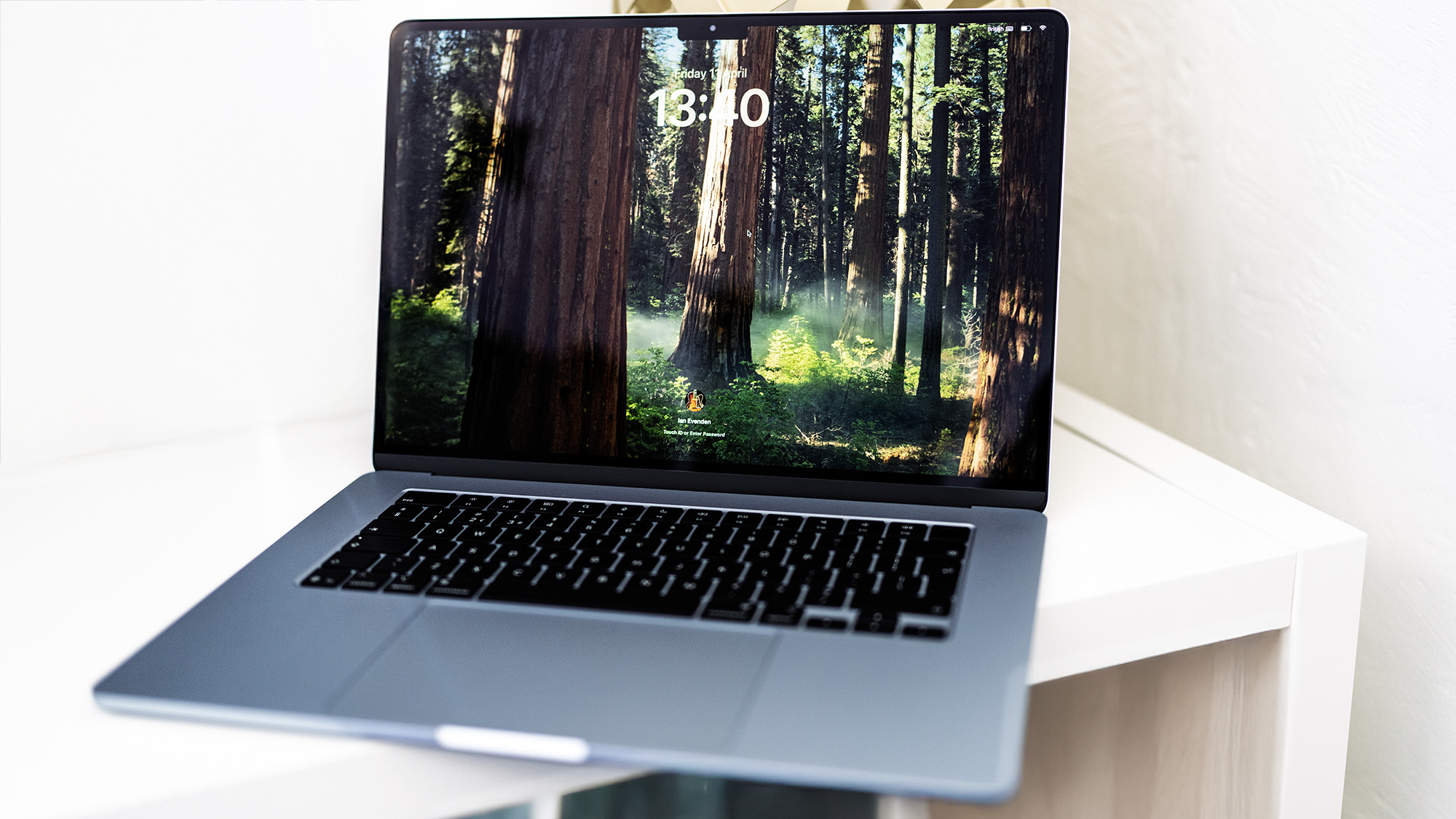
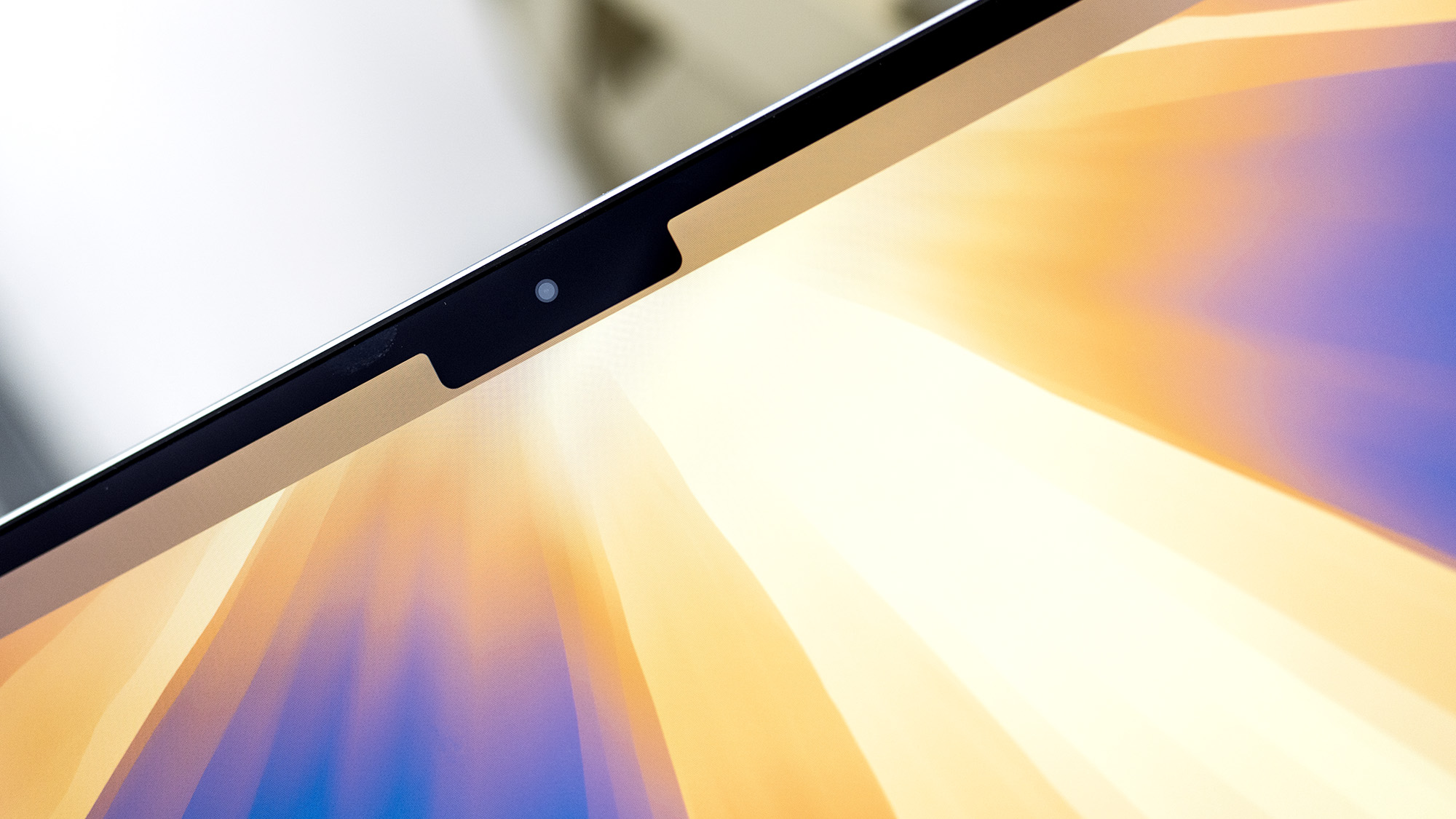
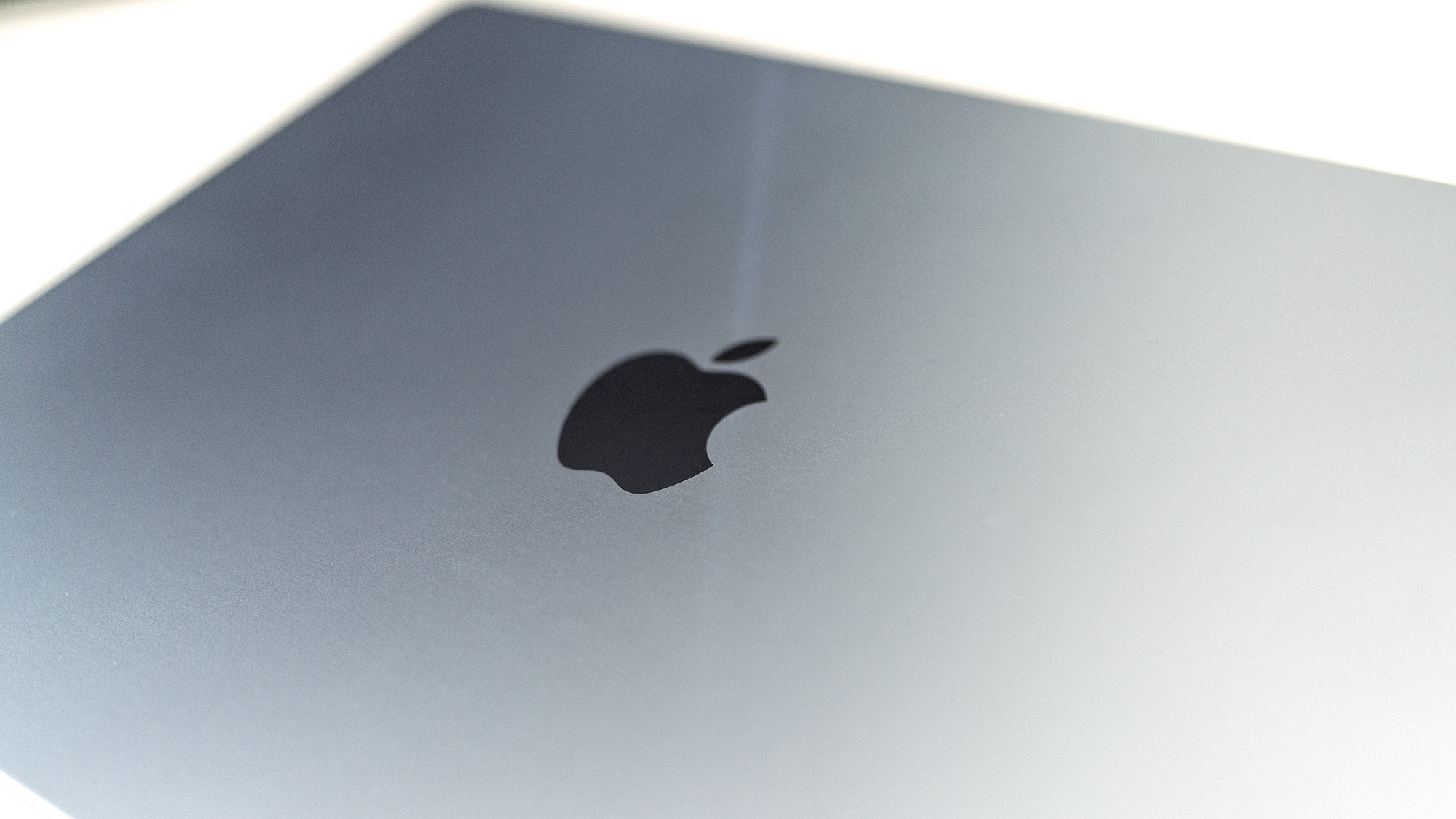
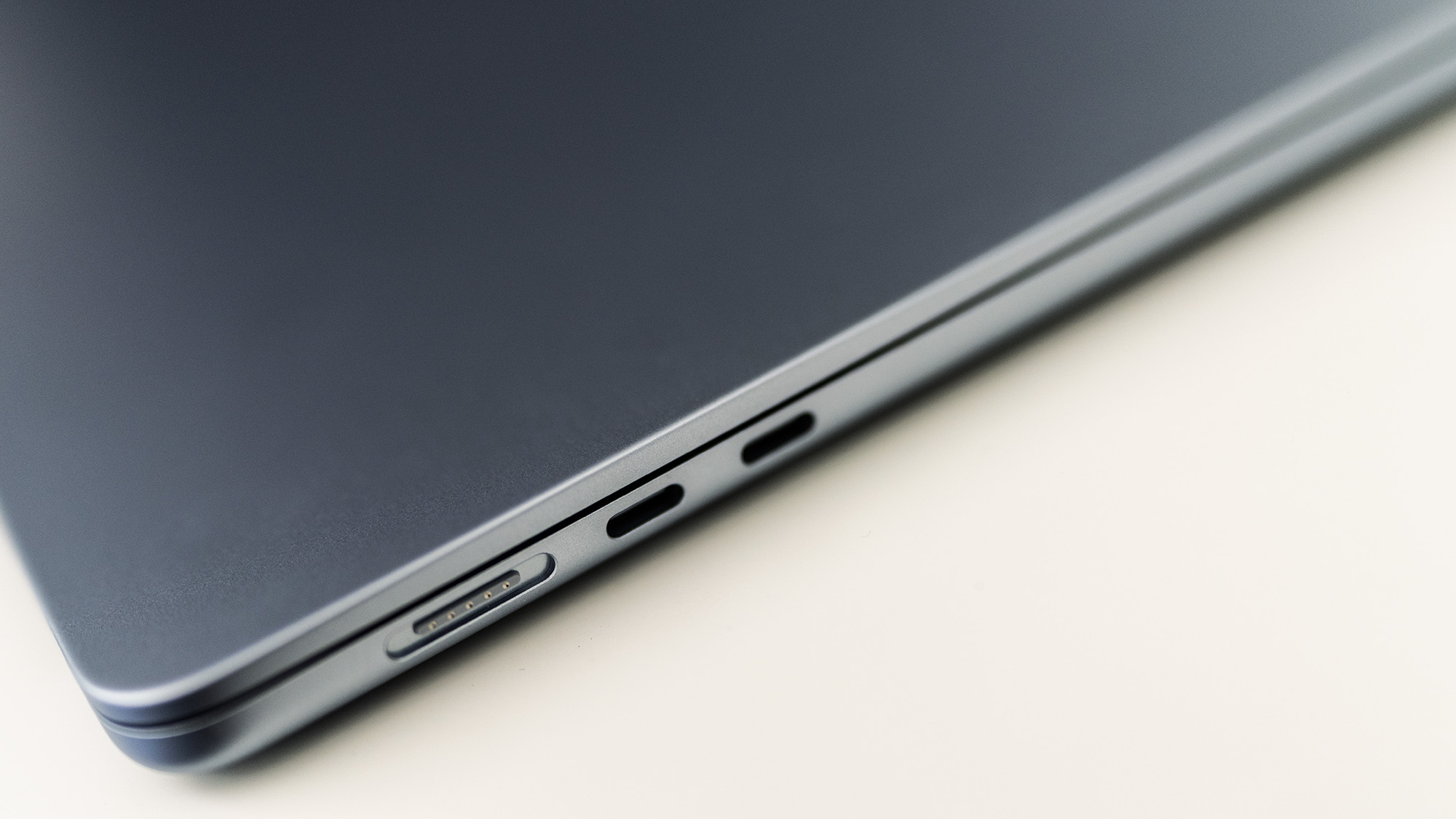
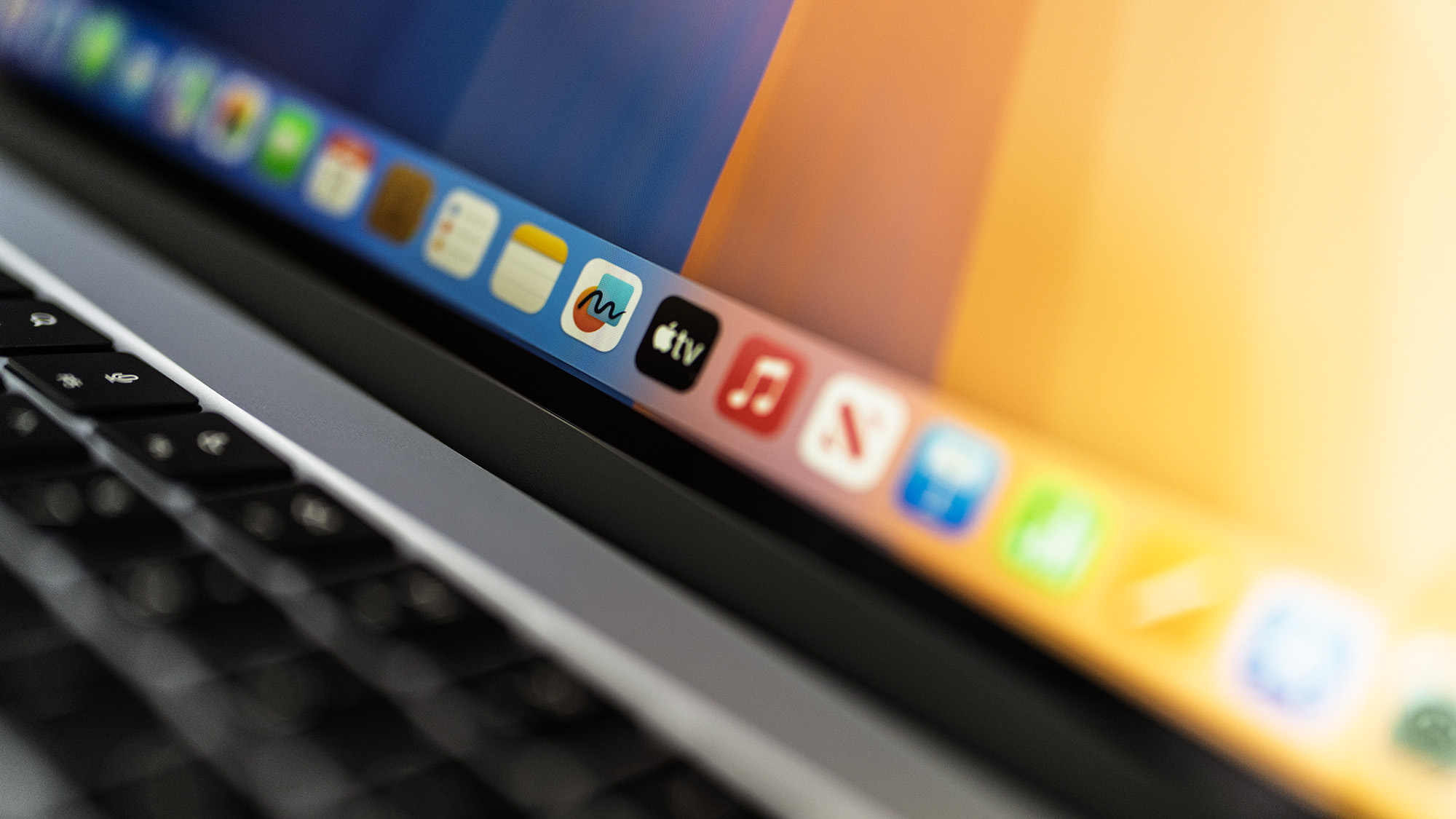
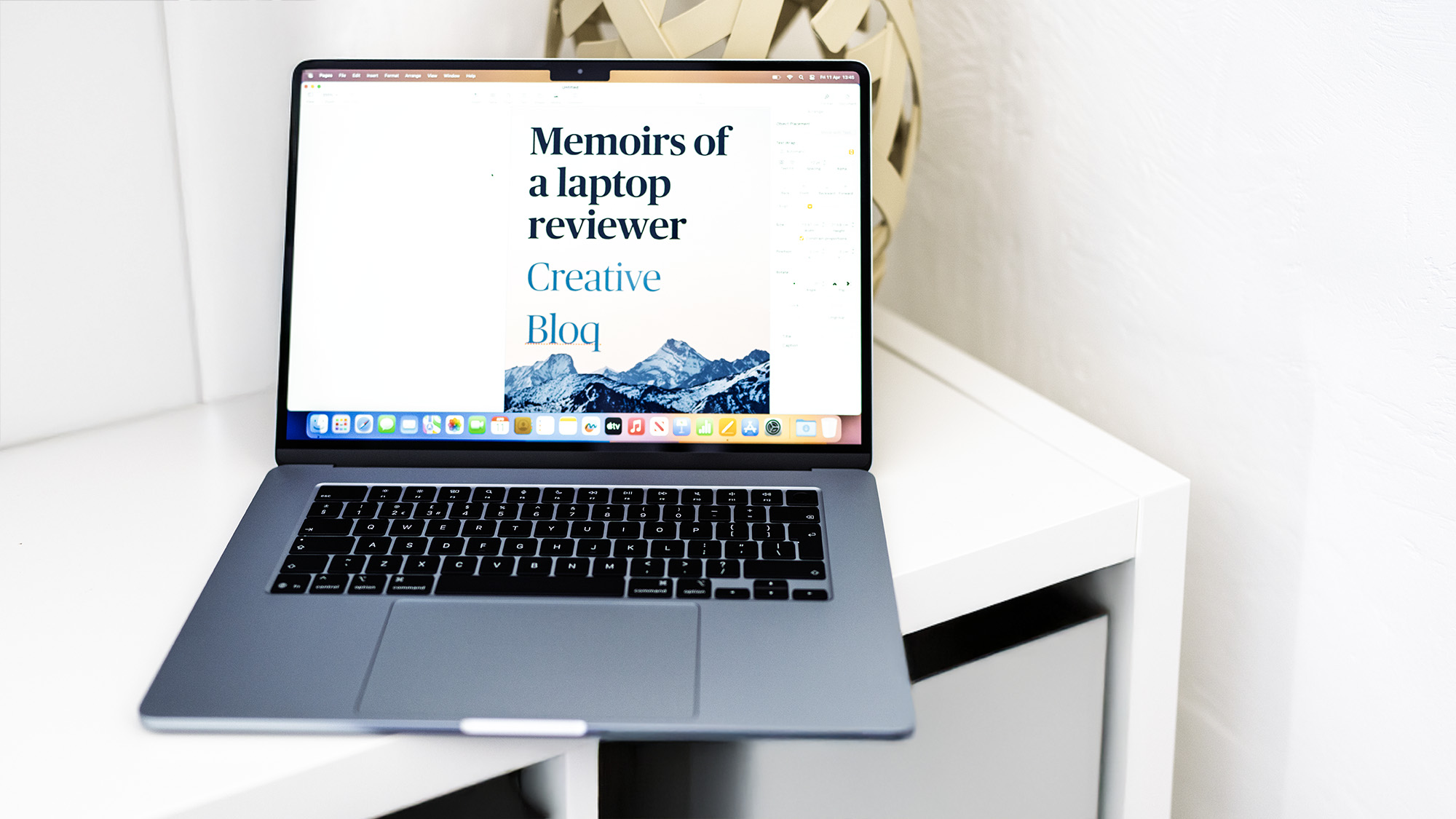
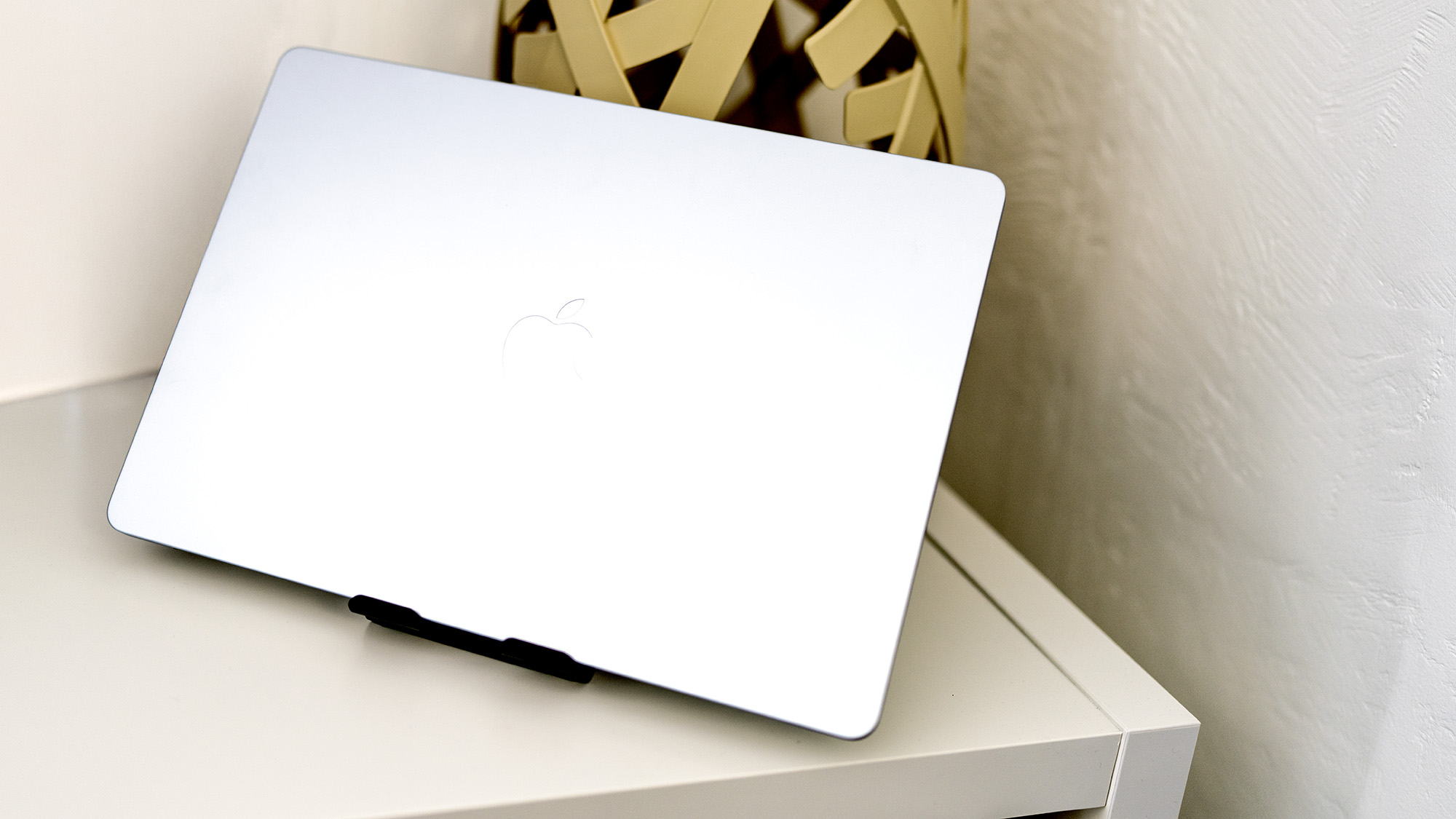

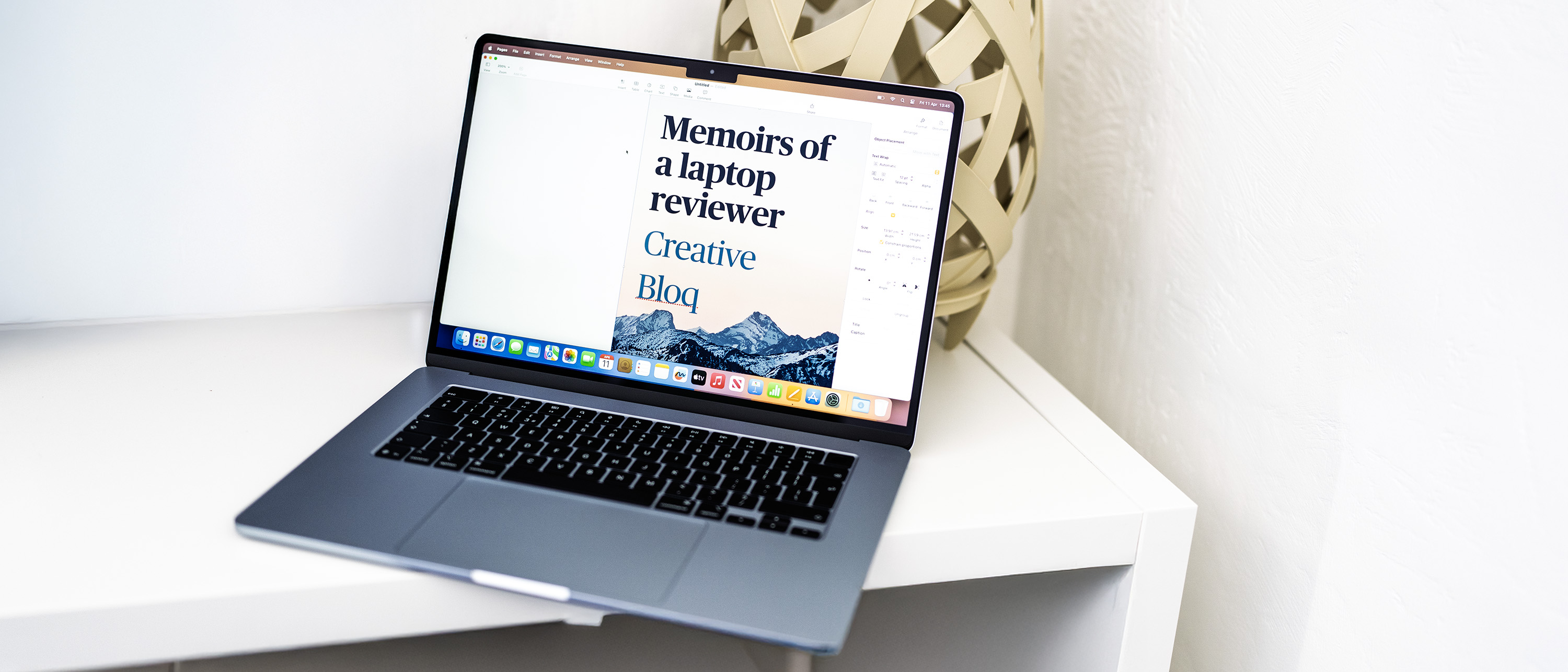
Specifications
Reasons to buy
Reasons to avoid
✅ You want great battery life: Real-world usage easily lasted a full workday in our testing.
✅ You want silent computing: Passive cooling means no fans and zero noise.
✅ You want something slim and sleek: The Air M4 delivers impressive performance in an extraordinarily thin package.
❌ You want sustained high-performance workloads: Passive cooling means some thermal throttling.
❌ Your budget is constrained: Though slightly cheaper than the previous generation, it's still a premium-priced laptop.
❌ You need specialized graphics power: While impressive, the integrated GPU isn't comparable to dedicated graphics cards.
🔎 MacBook Air M4 is exceptionally light, more affordable than a MacBook Pro, offers stellar battery life with silent operation, and delivers impressive performance gains over its predecessor. ★★★★½
What you need to know
If you don't need the ultimate power of the MacBook Pro for intensive tasks like complex 3D rendering and 4K video editing, the MacBook Air offers everything necessary for graphic design at a more accessible price point. The latest model, featuring the new M4 processor, represents a major advancement over the M3, with exceptional battery life, silent operation, and an thin, light, and portable design.
Design: Apple's refined aesthetic shines in this solid, slab-sided design that maintains the modern look introduced with the M2 generation. Available in a new silvery-blue shade that replaces Space Grey, along with Silver, Starlight, and Midnight, it measures a mere 1.15cm thick throughout. The 15-inch format provides ample screen real estate and comfortable typing space without compromising portability. Build quality remains excellent, benefiting from the fanless design that eliminates potential points of failure.
Performance: The M4 chip is impressive thanks to its 10-core CPU (4 performance, 6 efficiency) and 10-core GPU, outperforming the M3 model by approximately 25% in multi-core tests. Benchmark results show strong performance in Cinebench 2024 and Geekbench 6, with single-core scores surpassing even some high-end desktop processors. While it may experience some throttling under sustained heavy workloads due to passive cooling, everyday performance remains excellent, with instant wake from sleep and fast SSD speeds around 3,400Mbps.
Battery life: One of the Air's standout features continues to be its exceptional battery endurance. While Apple claims up to 18 hours, real-world testing confirms that it easily handles a full workday with capacity to spare. Even with demanding creative tasks like photo editing and complex layouts, the battery consistently delivers reliable performance throughout extended use.
Price: Starting at £1,199 for the base model with 16GB RAM (now standard) and 256GB storage, the M4 Air has seen a modest price reduction compared to its predecessor. While still in the premium price bracket, the Air's combination of portability, battery life, silent operation, and improved performance helps justify its cost. The model tested at £1,599 includes a 1TB SSD, offering excellent value for creative professionals.
Read more: MacBook Air (M4) review
Attributes | Notes | Rating |
|---|---|---|
Price | Premium but with slight reduction from previous generation | ★★★★ |
Design | Exceptional build quality | ★★★★★ |
Performance | Strong everyday performance with some thermal limitations | ★★★★ |
Battery life | Outstanding longevity | ★★★★★ |

"This has to be Apple’s best laptop. It may not be the most powerful – we have the MacBook Pro for that – but there's nothing like the 15-inch MacBook Air to make you go ‘wow’ when you get it out of the box."
Best premium laptop
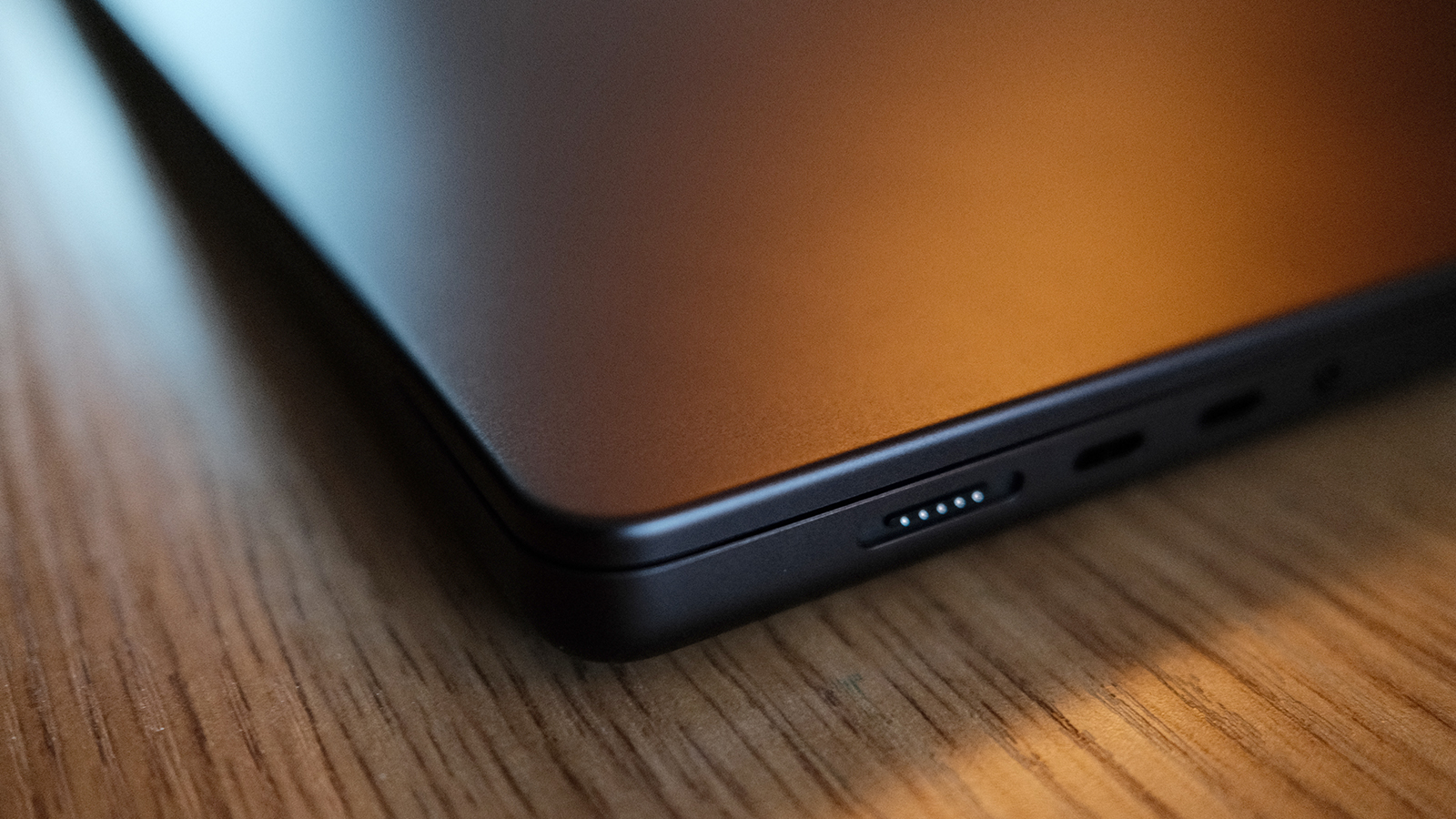
Specifications
Reasons to buy
Reasons to avoid
✅ You need serious 3D power: It handles complex 3D workflows and rendering tasks brilliantly.
✅ You want desktop-class performance: It's comparable to high-end workstations.
✅ You value build quality: It boasts top-tier construction with premium materials.
❌ You're on a tight budget: Premium features come with a premium price tag.
❌ You need Windows-specific software: Some tools may not be optimised for macOS.
❌ You want user-upgradeable components: The integrated design limits your options.
🔎 MacBook Pro M4 Pro represents a big leap forward in mobile workstations. The superior thermal management and Thunderbolt 5 connectivity make it a compelling option for designers running resource-intensive software. ★★★★½
What you need to know: The performance of the MacBook Pro 16 (M4 Pro, 2024) blew our reviewer away, as it could quite easily replace a desktop computer in terms of power. This makes it a great choice for graphic designers who use resource-intensive software in areas such as animation, 3D modelling and/or video editing. For those with more modest needs, though, it may be overkill and you may be bettter off with the more affordable, basic version of the 2024 MacBook Pro. Meanwhile, if you're generally a Windows user and not sure about whether to go Apple at all, see our Mac vs Windows guide.
Design: This MacBook looks fantastic, with a space black finish offering a premium feel. The build quality is exceptional, with a robust yet slim unibody design that remains portable despite its power. The 16-inch Liquid Retina XDR display impresses with its high contrast ratio of 1,000,000:1 and excellent colour accuracy. And improved thermal management means it runs cooler than previous generations, even under heavy workloads.
Performance: Our tests found that the M4 Pro demonstrates big performance gains over its predecessor. Benchmark scores show impressive results with Cinebench 2024, scoring 177 for single-core and 1,729 for multi-core performance. The GPU performance is particularly notable, with a score of 9,140. Real-world performance in applications like Blender, Cinema 4D, and Maya is smooth and responsive, with no stuttering even during complex operations. And in practice, our reviewer found the M4 Pro could handle multiple creative applications simultaneously without breaking a sweat.
Battery life: One of the most impressive features of the M4 Pro is the battery life, which can last through a full workday even when handling demanding tasks such as 3D rendering. The included 140W charger provides fast charging capabilities, though the machine works well with third-party charging solutions through its Thunderbolt ports.
Price: The MacBook Pro M4 Pro starts at £2,499, with fully specified models reaching up to £7,349. While this represents a significant investment, the performance-to-price ratio is compelling when compared to equivalent desktop workstations, especially considering its portability.
Read more: MacBook Pro 16 (M4 Pro, 2024) review
Attributes | Notes | Rating |
|---|---|---|
Price | Premium pricing but justified by performance | ★★★★ |
Design | Excellent build quality and thermal management | ★★★★★ |
Performance | Outstanding capability for 3D and VFX work | ★★★★★ |
Battery life | Impressive longevity even under heavy loads | ★★★★★ |

The 2024 MacBook Pro M4 Pro 16 is a powerful laptop for any use case, from modelling to animating and rendering, as well as daily computing tasks. It could even replace a desktop workstation for many users.
Best 2-in-1 laptop
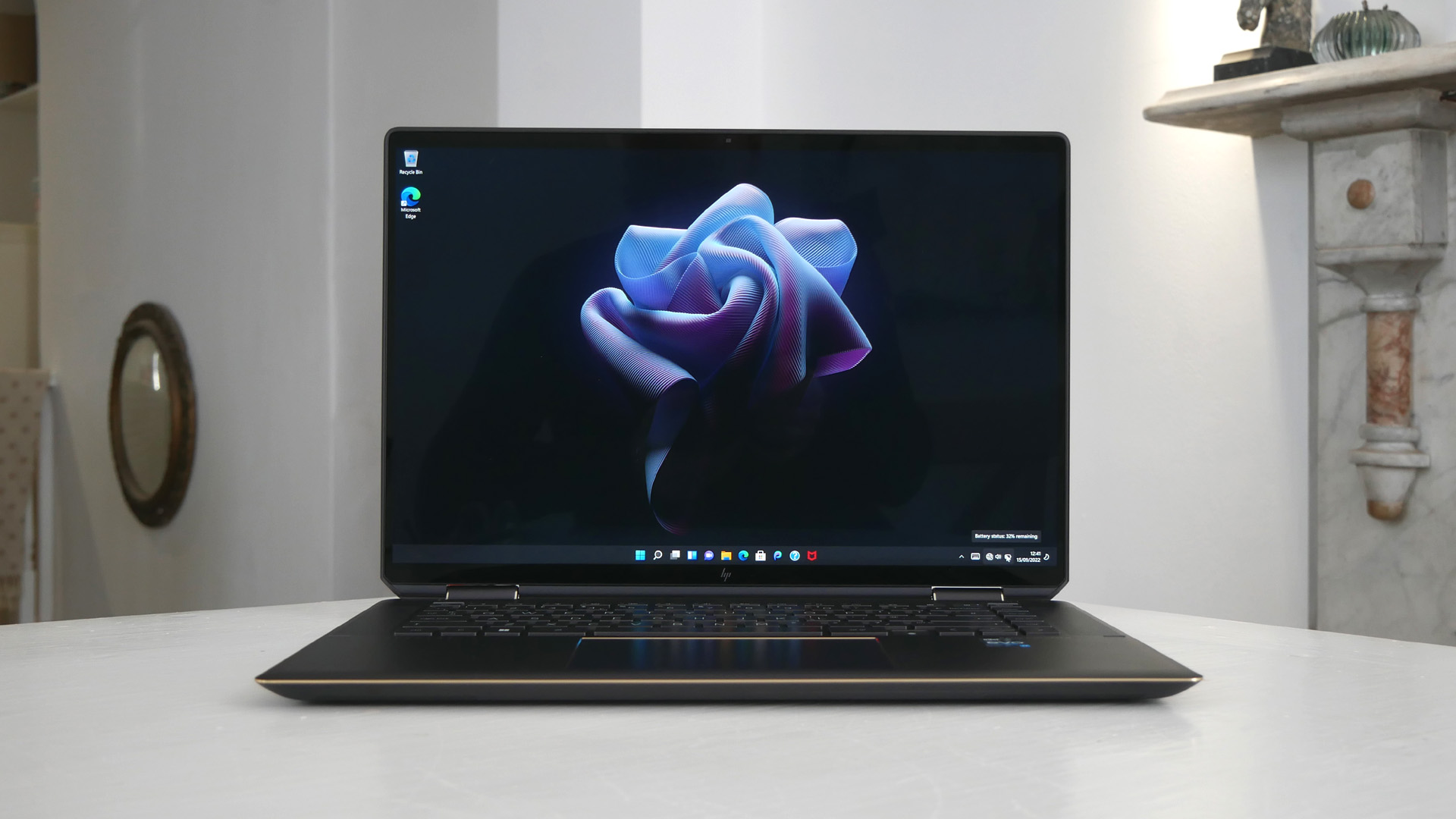

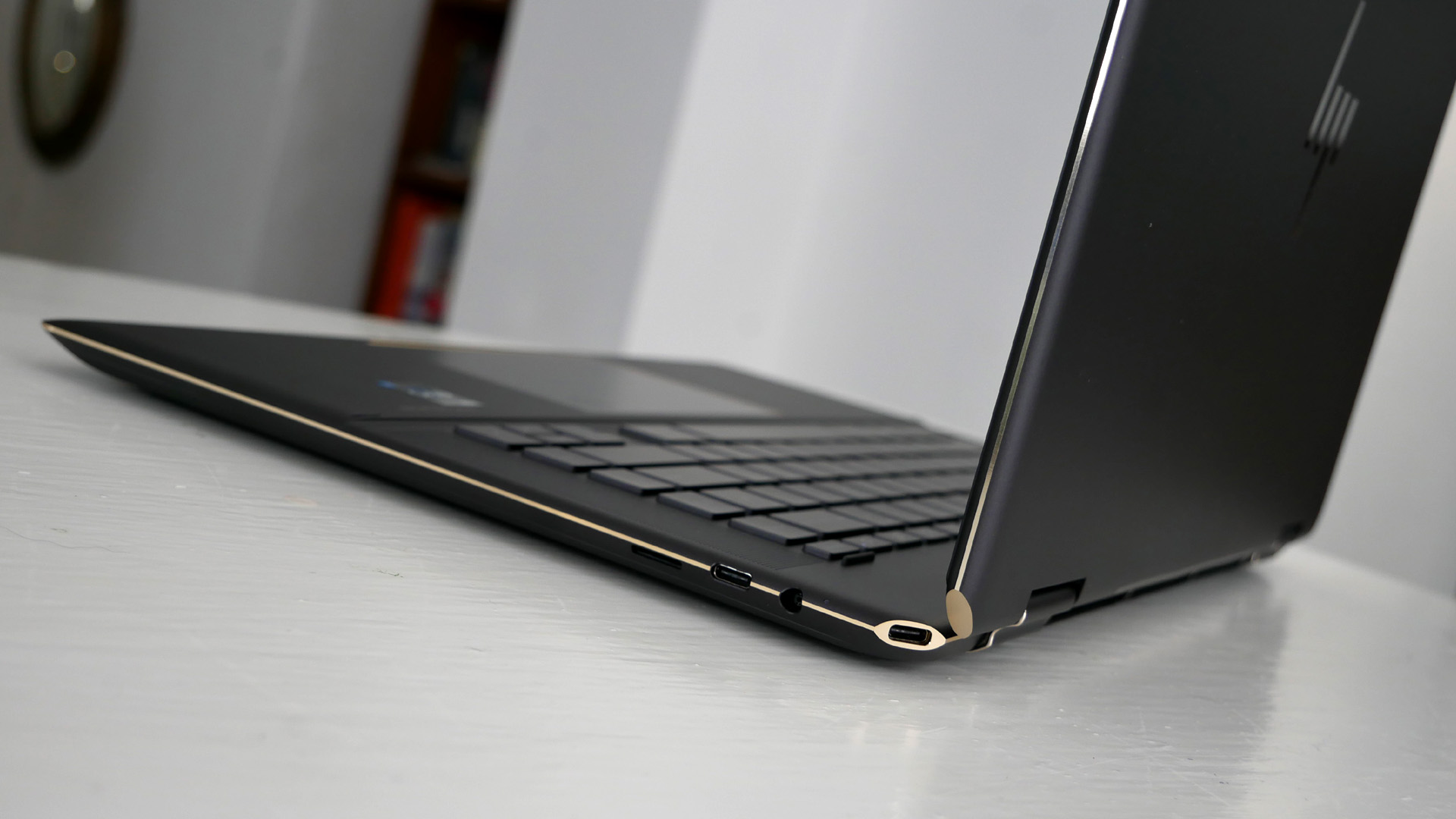
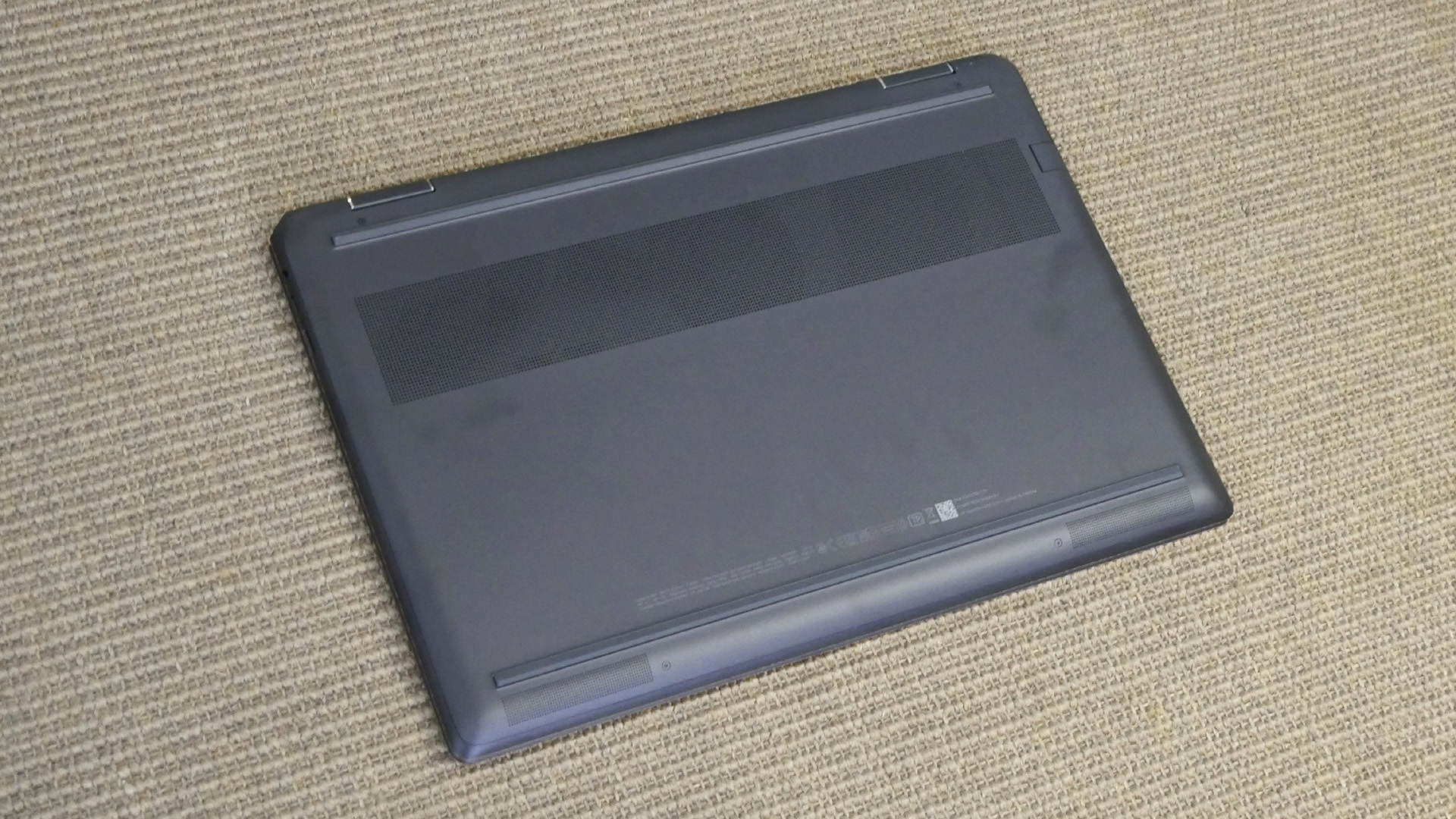
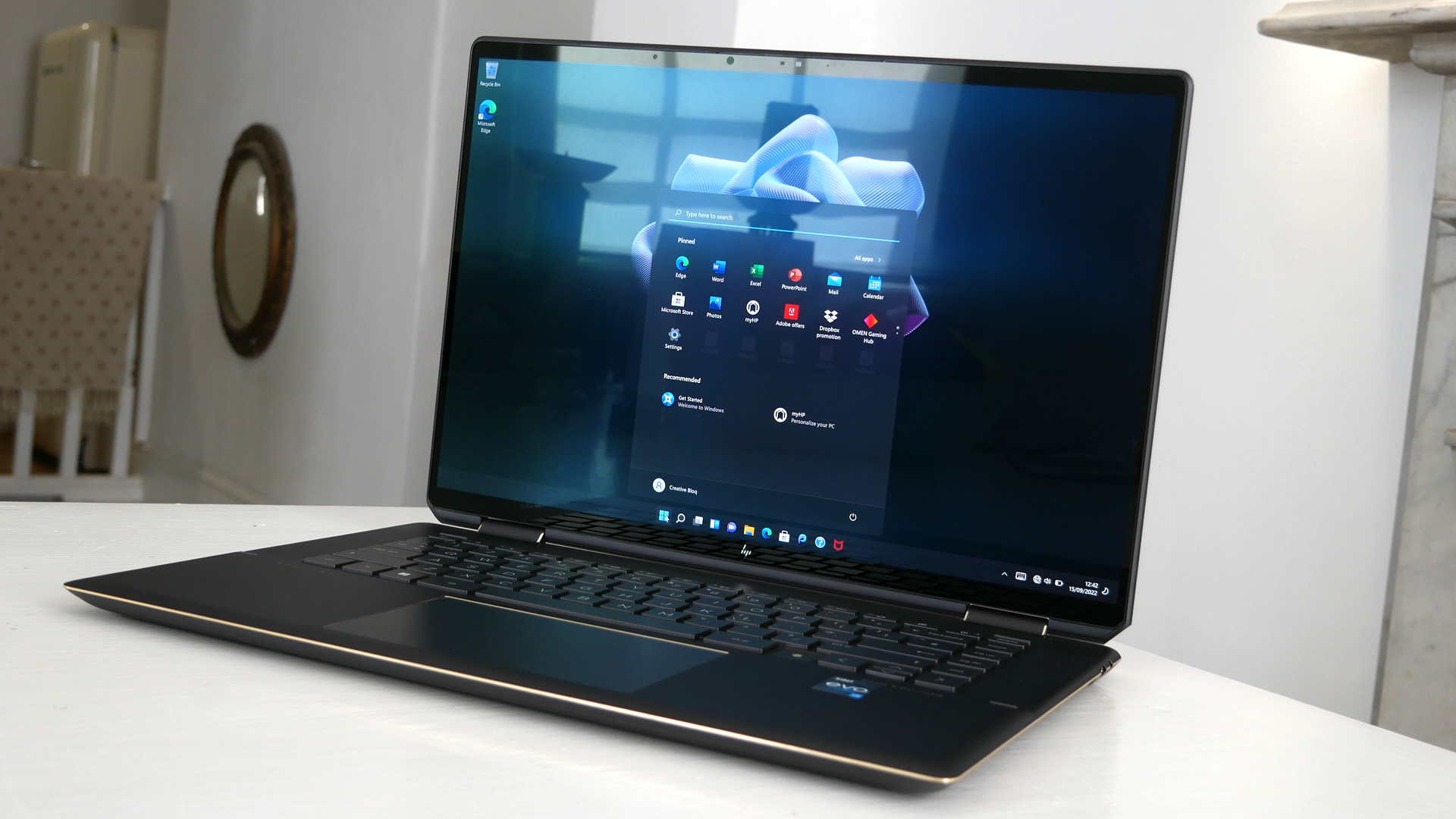
Specifications
Reasons to buy
Reasons to avoid
✅ You want a good productivity laptop: Its powerful hardware is ample for most productivity tasks. The versatile 2-in-1 design offers flexibility for various scenarios.
✅ That can do double duty for entertainment: Its OLED touchscreen offers excellent image quality with vibrant colors and deep blacks, making it great for colour work.
✅ And has a touchscreen and stylus: The HP Spectre x360 14 comes with a stylus for drawing and writing, and its touchscreen is nice and responsive.
❌ You need a discrete GPU chip: Its reliance on the processor’s Arc-integrated graphics means that if you use pixel-heavy applications, you may prefer similarly priced laptops with a dedicated GPU.
❌ You have no need for pen input: The stylus is lovely, but if you won't use it, you may resent paying for it as part of the overall package.
🔎 HP Spectre x360 16 is a high-end convertible laptop that impresses with its classy design and powerful performance. It features a responsive OLED touchscreen and robust internal components. ★★★★
What you need to know: The 2024 Spectre x360 14 is a versatile 2-in-1 laptop with a touchscreen and flexible hinge, allowing it to function as both a laptop and tablet. It features Intel's latest mobile processor and ample RAM, making it suitable for graphic design – and our testing agreed. The device comes with a stylus for drawing and writing – a big draw for designers – and can be positioned in various modes for different uses. Its high specifications make it a strong contender among touchscreen laptops.
Design: The 2024 HP Spectre x360 14 showcases several thoughtful design elements. Its robust hinge, connecting at two points with broad connectors, allows smooth 360-degree rotation without wobble. The laptop features clever port placement, with an angled Thunderbolt port for easy access and a slim, spring-loaded USB-A port. Aesthetic touches include filed-off corners where the screen and body meet. Obviously the display is super-important in design, and the OLED screen doesn't disappoint, we were impressed by the deep blacks and rich colour as well as the brightness.
Performance: The top-tier configuration we reviewed delivers strong performance in productivity and creative applications. It can boost up to 4.8GHz and 115W for demanding tasks, while its 1.4GHz resting frequency allows for power efficiency as low as 28W. We thought it more than powerful enough for graphic design tasks – as long as you're not utilising the most heavy apps such as 3D modelling.
Battery life: Our testers achieved eight and a half hours of life under PC Mark's Work 3.0 benchmark. This test simulates real-world usage by keeping the screen active and running various tasks and video calls. Users may extend this battery life further by utilising power-saving features such as allowing the screen to turn off when idle. This is solid – not the best but by no means the worst.
Price: Priced at £/$1,899 at the time of writing, this isn't a budget laptop, though in use it felt like it deserved the price.
Read more: HP Spectre x360 14 (2024) review
Attributes | Notes | Rating |
|---|---|---|
Price | Mid-range, good value | ★★★★ |
Design | Not lightweight, great screen | ★★★★ |
Performance | Punchy, discrete graphics card | ★★★★★ |
Battery life | Excellent, top performance | ★★★★★ |
| Row 4 - Cell 0 | Row 4 - Cell 1 | Row 4 - Cell 2 |

What sets the Spectre apart is its 2-in-1 nature and the quality of its construction, and in use it feels as if it was worth the price. Its touchscreen means you can use it as a drawing tablet.
Best AI laptop
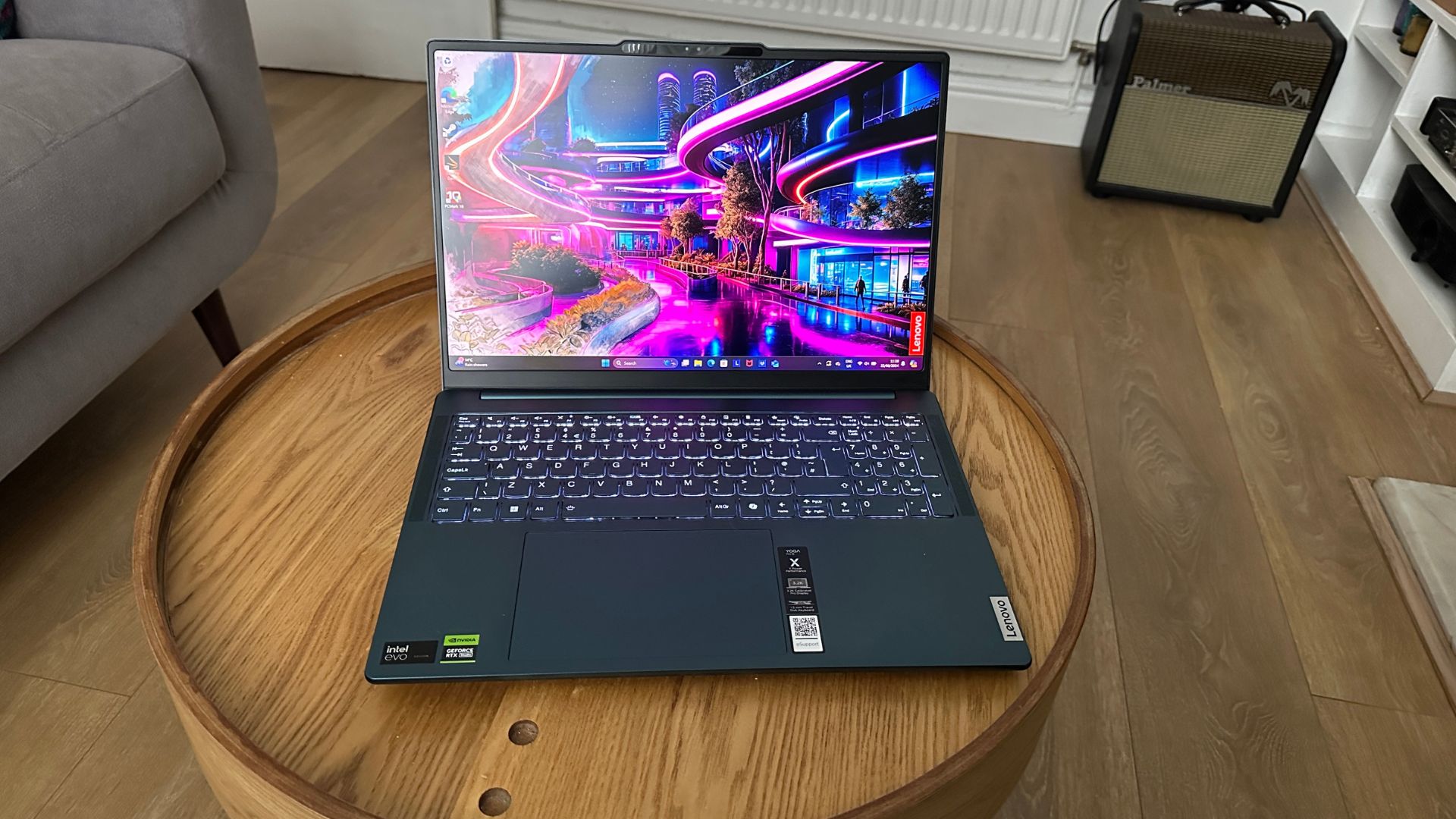
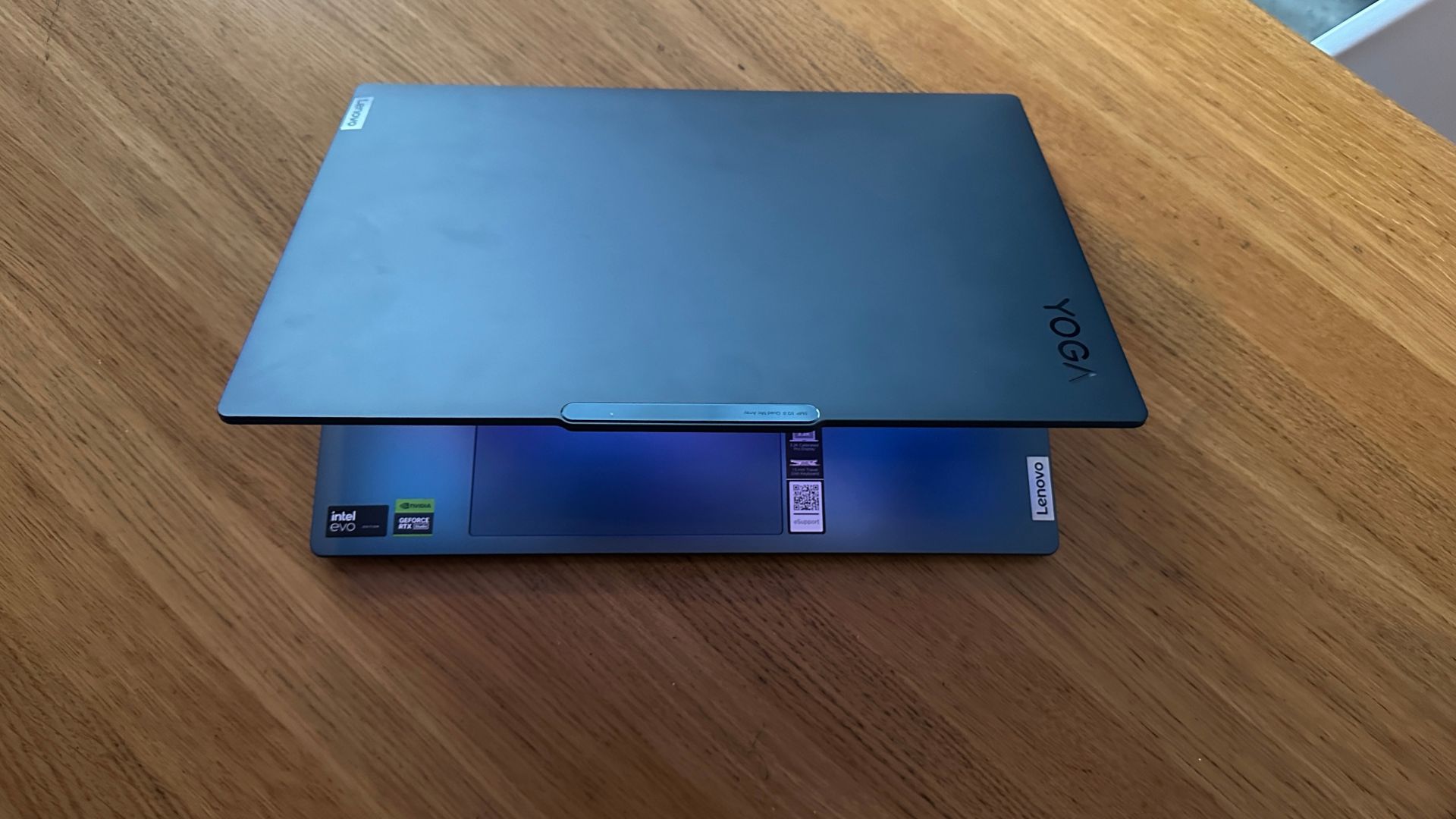
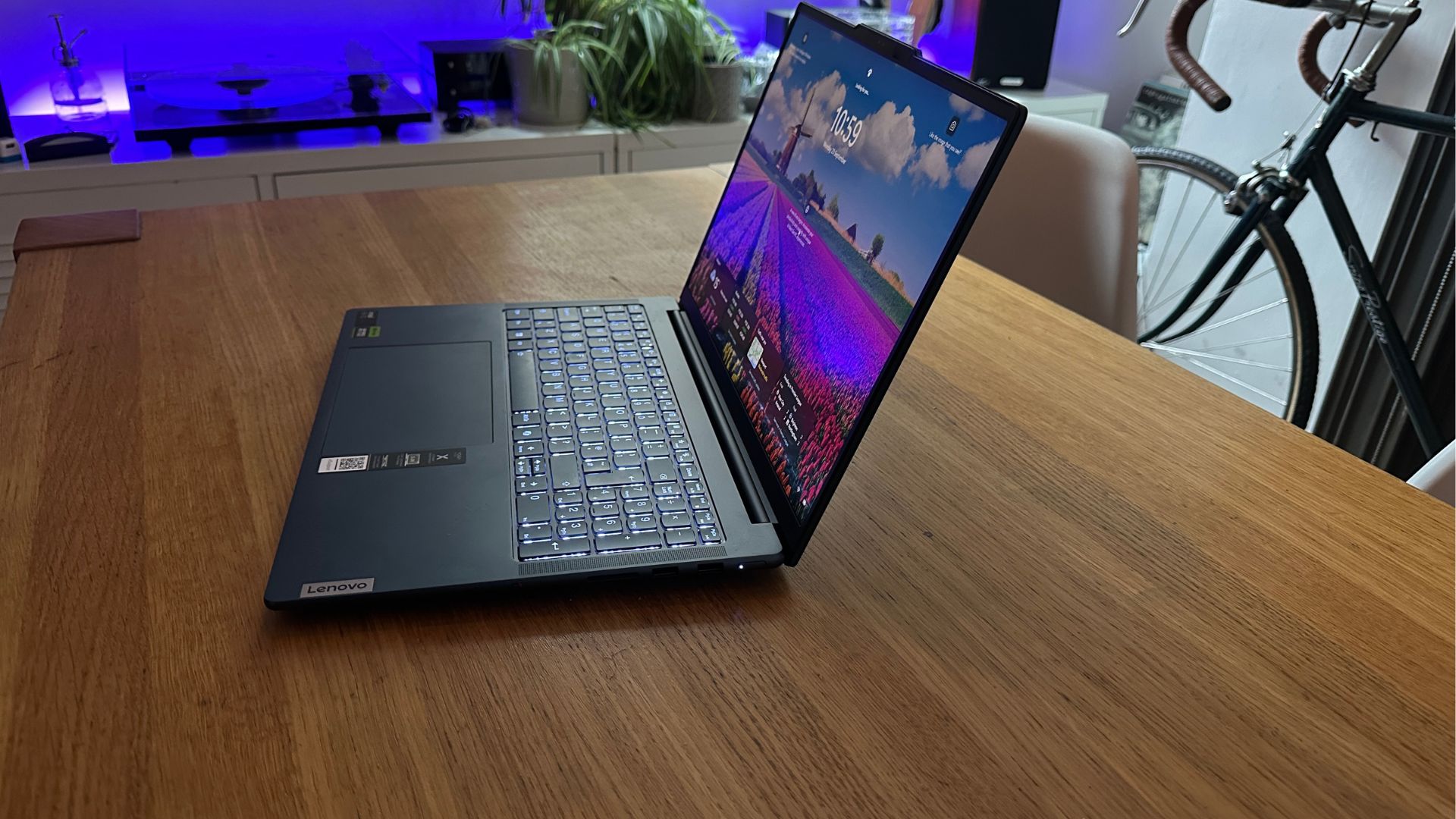
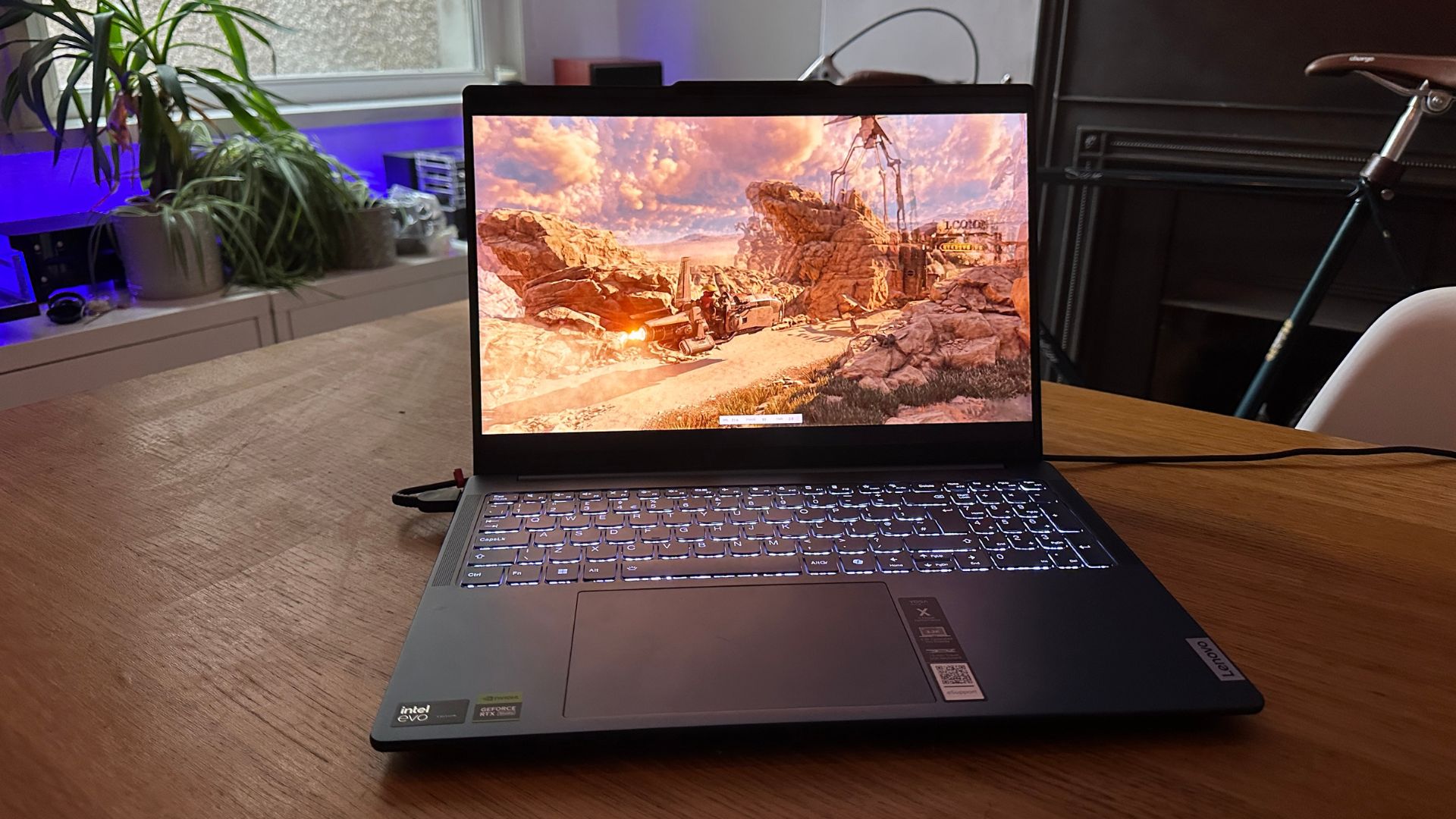
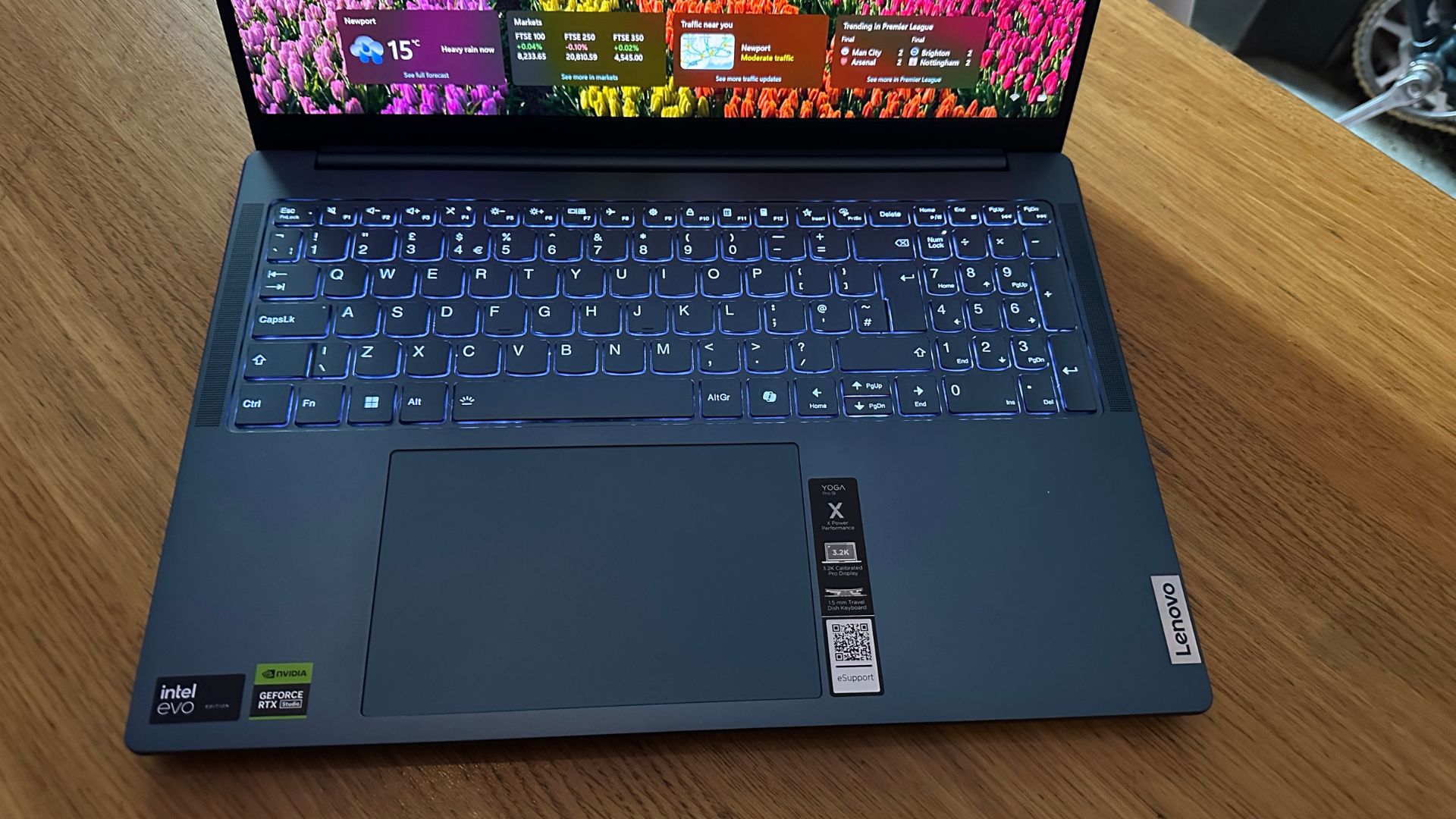

Specifications
Reasons to buy
Reasons to avoid
✅ You'd appreciate a large, bright screen: The 16-inch screen is glorious, and gives lots of space for your creative work.
✅ You like AI: If you're ready to integrate AI features into your workflow, this is for you.
✅ You need real power: This is for graphic designers using more than just light Illustrator or Photoshop. If you use a lot of layers, or integrate heavier tasks, this will serve you.
❌ You need long battery life: The battery is disappointing.
❌ You're on a budget: You pay for power with this machine.
🔎 Lenovo Yoga Pro 9i gen 9 has an incredible screen, loads of power and a bunch of super-cool AI features that boost power and optimise your workflow. What holds it back is the short battery life. ★★★★½
What you need to know: The Lenovo Yoga Pro gen 9 is a powerhouse that our testing concluded is a 'must-have' for creatives, and it is a rival for the best windows pick above. The Asus edges out this one for the reasons described above, but there are some specific AI elements that might make this more of a pull for you (plus it's a bit cheaper). It's got a glorious screen, and the AI also boosts the CPU.
Design: A sleek build makes for a lightweight laptop (though not as light as the MacBook Air), which has an aluminium chassis and a stable hinge. The keyboard is comfy and spacious. The screen is a bit of a star, a 3.2k, HDR, 16-inch beauty with 1600 Mini-LED dimming zones – this makes it perfect for graphic design. There is also a great set of connectivity ports including full SD slot.
Performance: Our benchmark tests show this laptop is more than capable of all creative tasks, depending on the configuration you go for. The one we tested is possibly too powerful for graphic designers, which could save you some money. The tests show this Lenovo will eat through tasks with zero lag – ideal if you integrate some 3D into your workflow. AI boosts the CPU as it stands on paper. Lenovo's Creator Zone brings AI features specifically for creatives, with generative AI helping with image creation – even learning your own visual style. AI features also optimise your creative apps for cooling, battery, performance and more.
Battery life: Unfortunately the downfall is battery with this machine. We got two hours our of it when gaming (powerful creative apps would have the same effect), but we were able to extend this to almost eight hours when streaming with a slightly dimmed screen.
Price: Starts from £1,635/$1,699
Read more: Lenovo Yoga Pro 9i gen 9 review
Attributes | Notes | Rating |
|---|---|---|
Price | In line with other laptops of this calibre | ★★★★½ |
Design | Beautiful display, excellent build quality | ★★★★★ |
Performance | Brilliant performance, AI-powered | ★★★★★ |
Battery life | Slightly disappointing | ★★★★½ |

This laptop is specifically designed for creative professionals who need a high-end machine capable of handling a variety of creative tasks. It also has potential for gamers, as the specs can easily manage intensive gaming. It's a must-have.
Best dual-screen laptop for graphic design
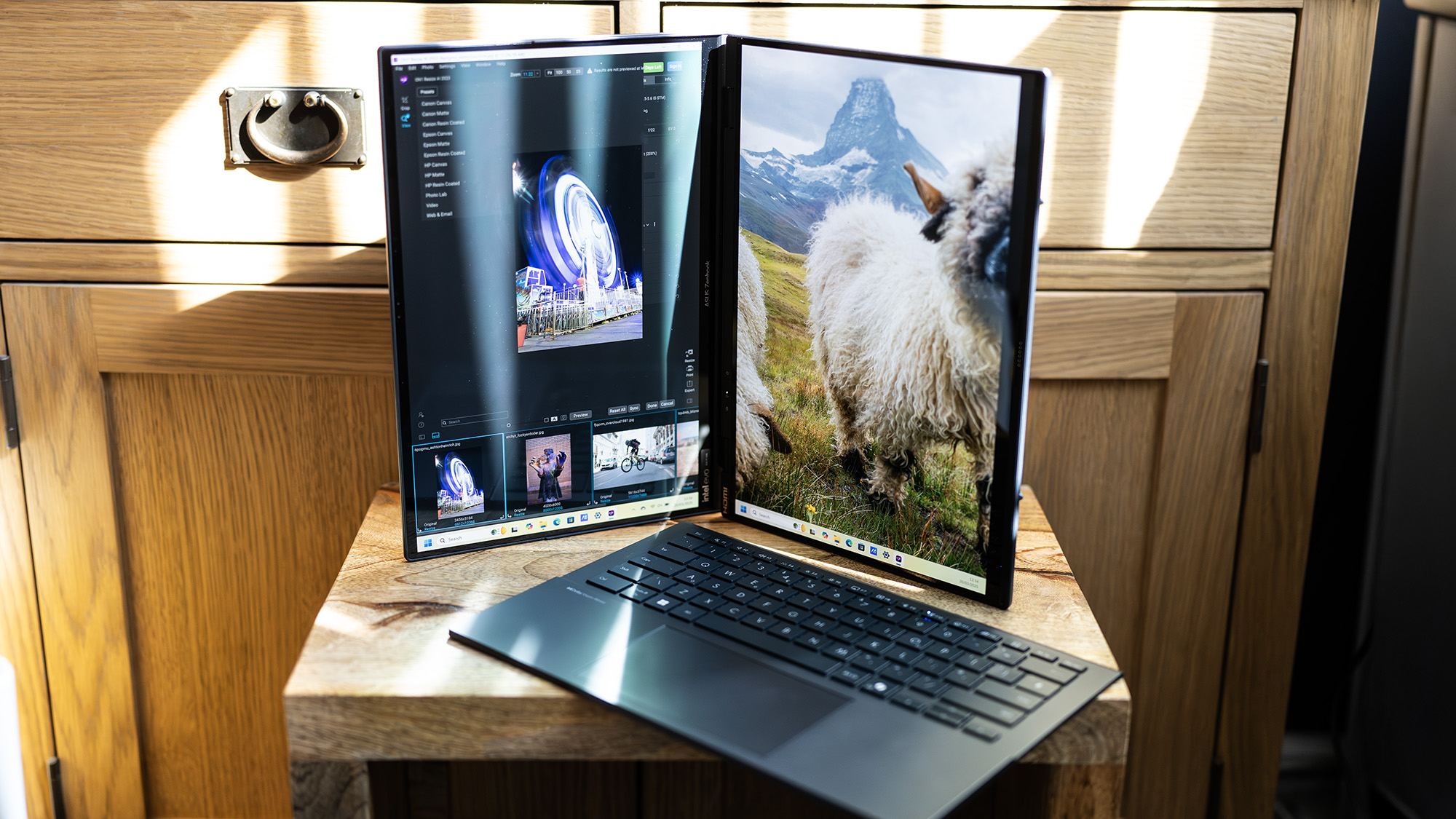
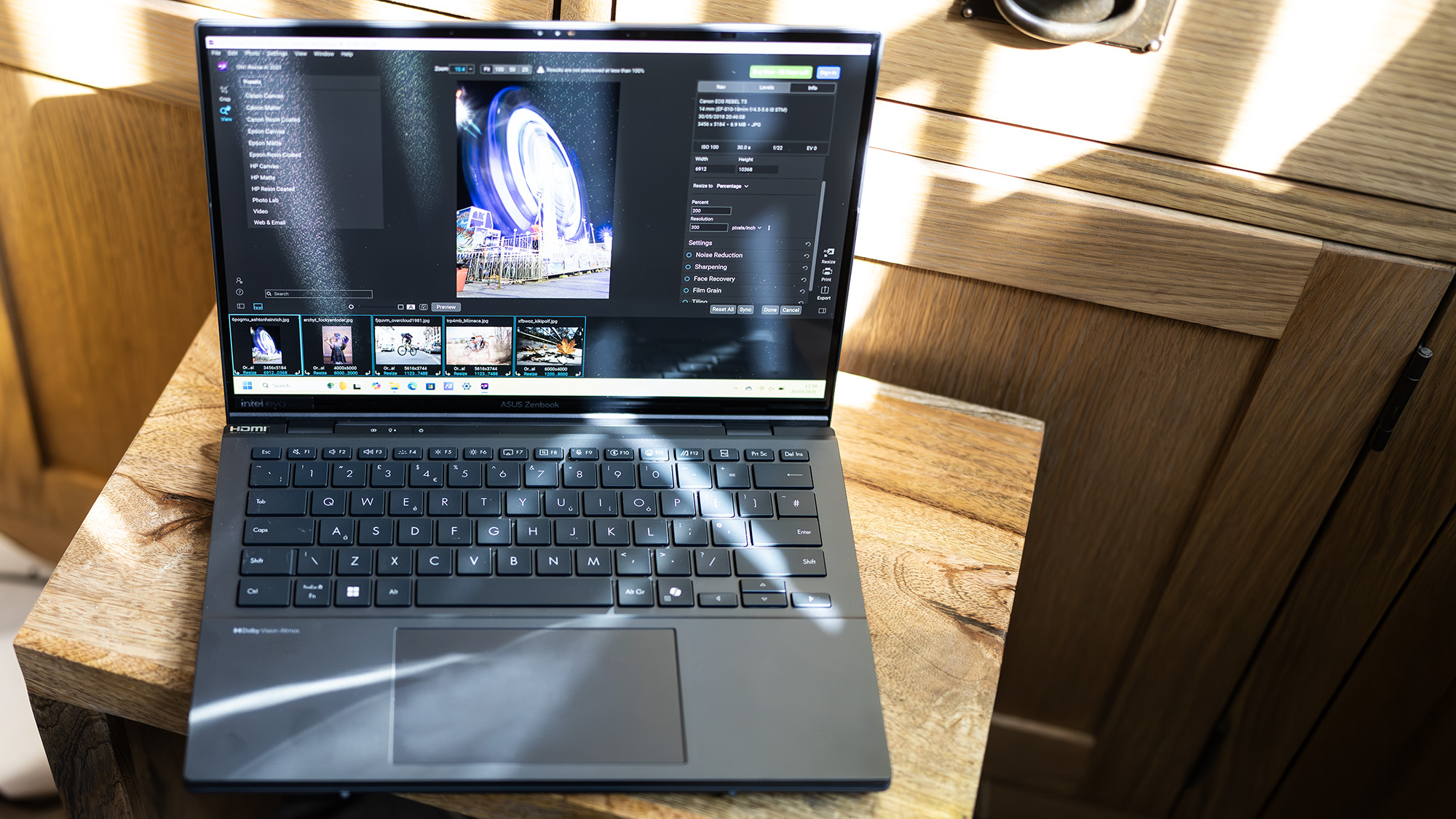
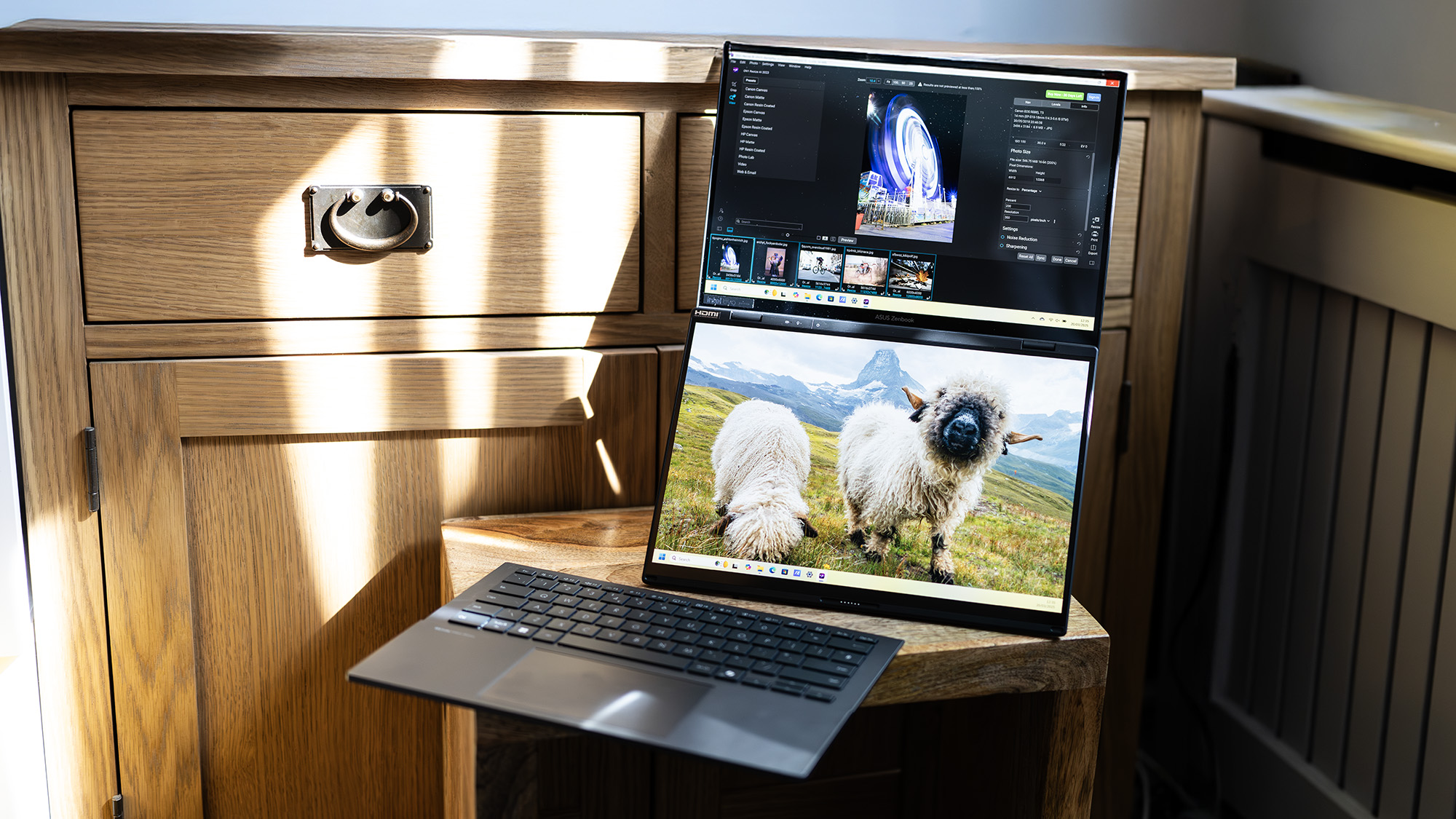
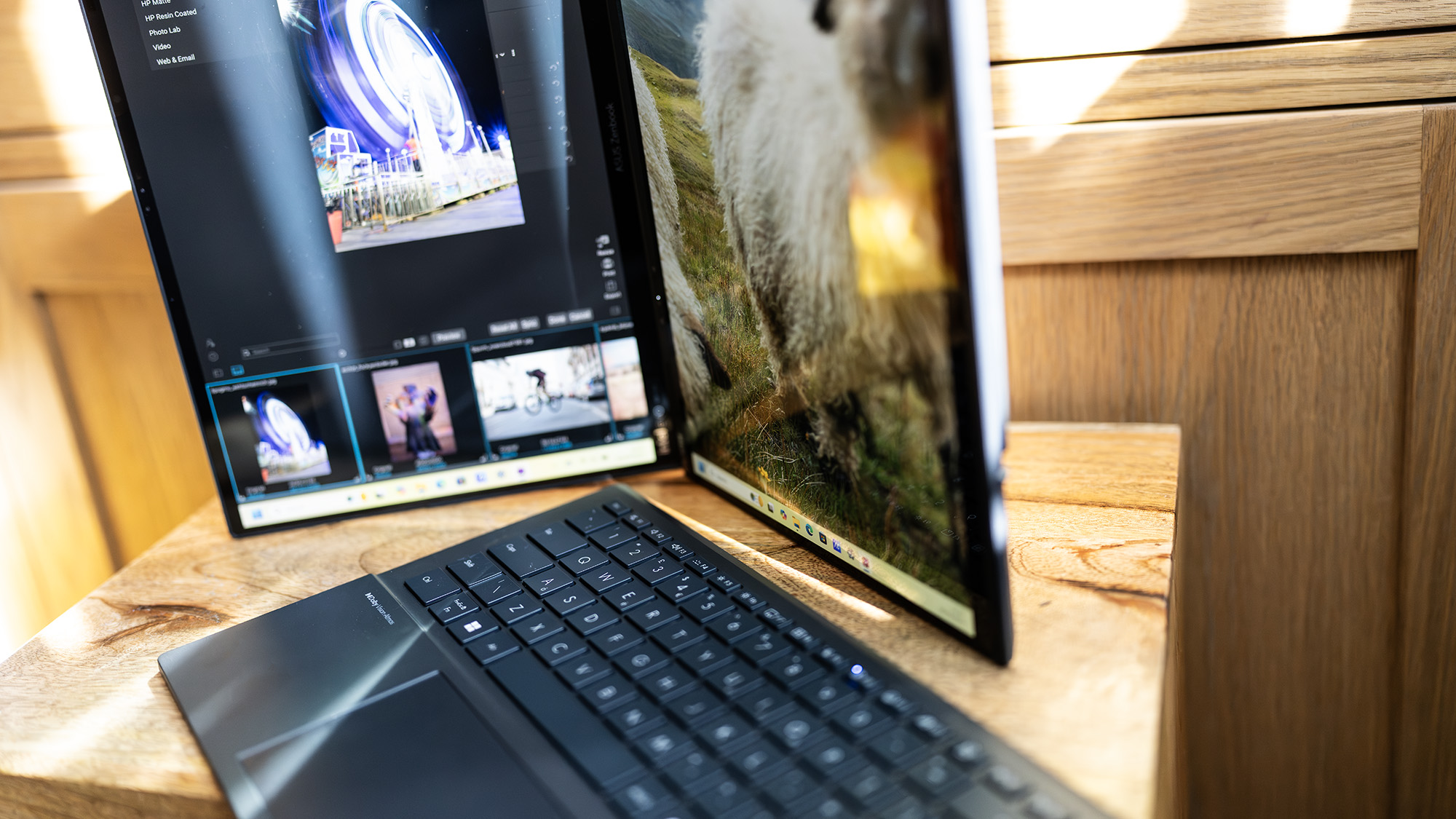
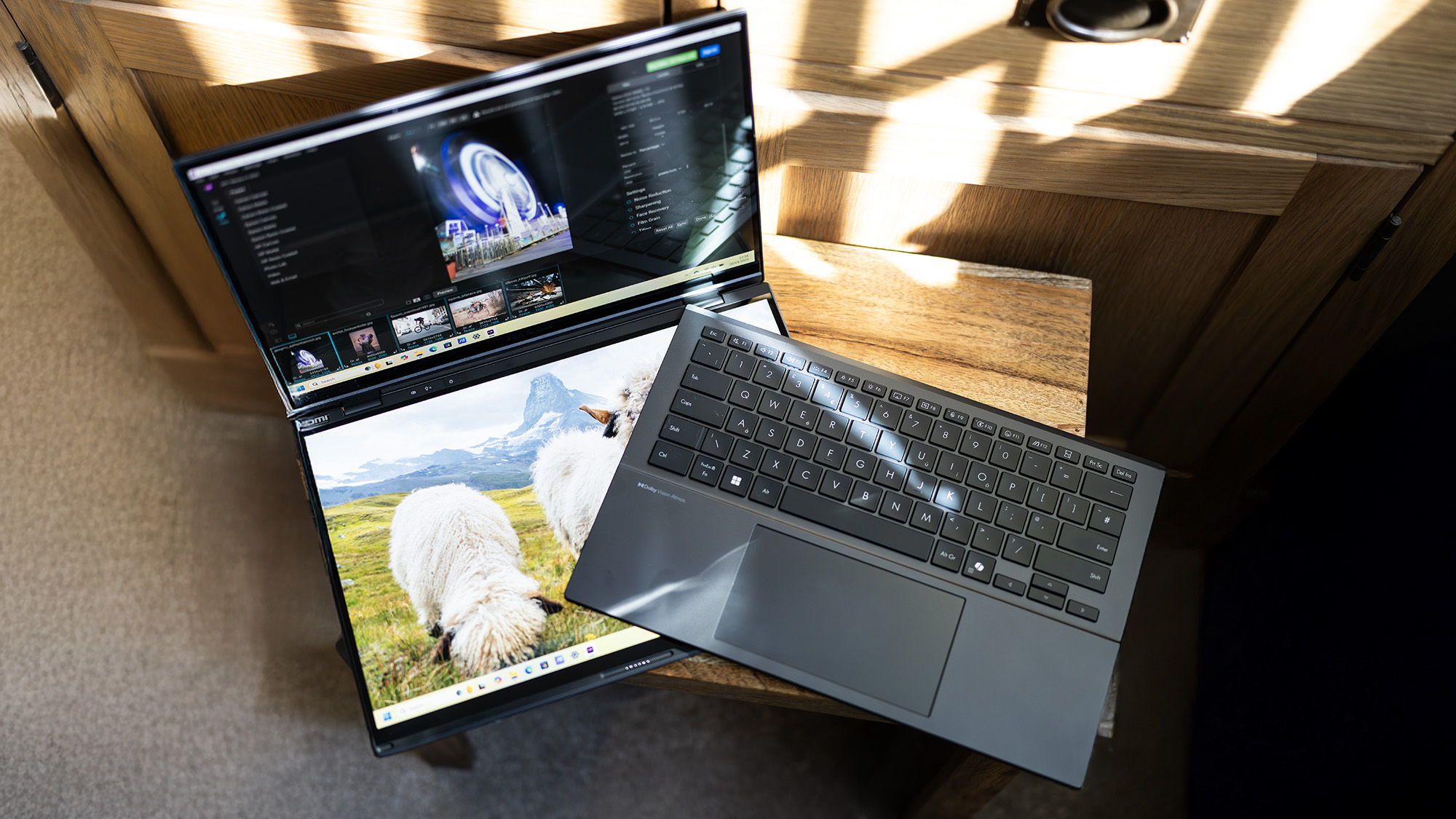

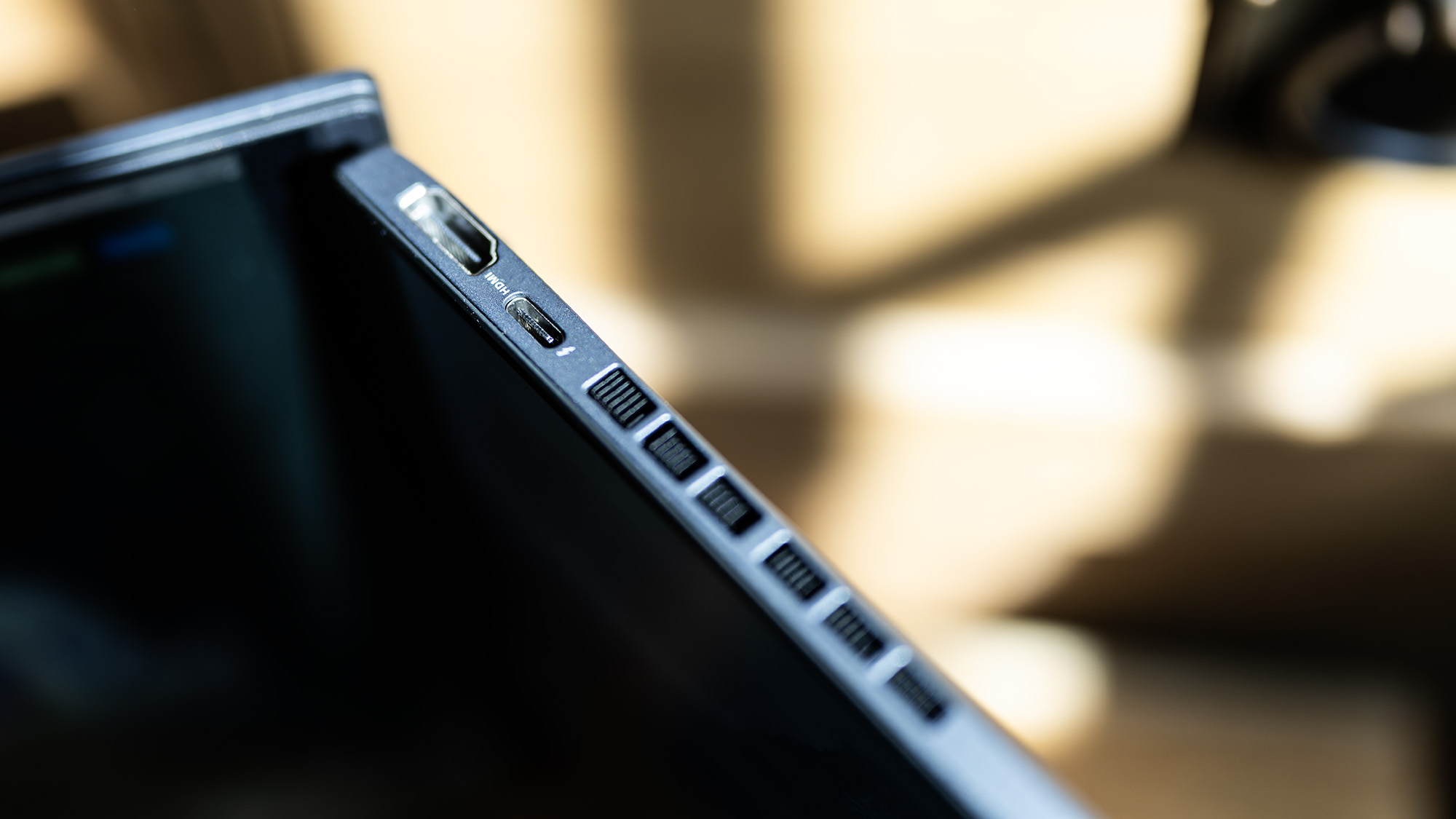
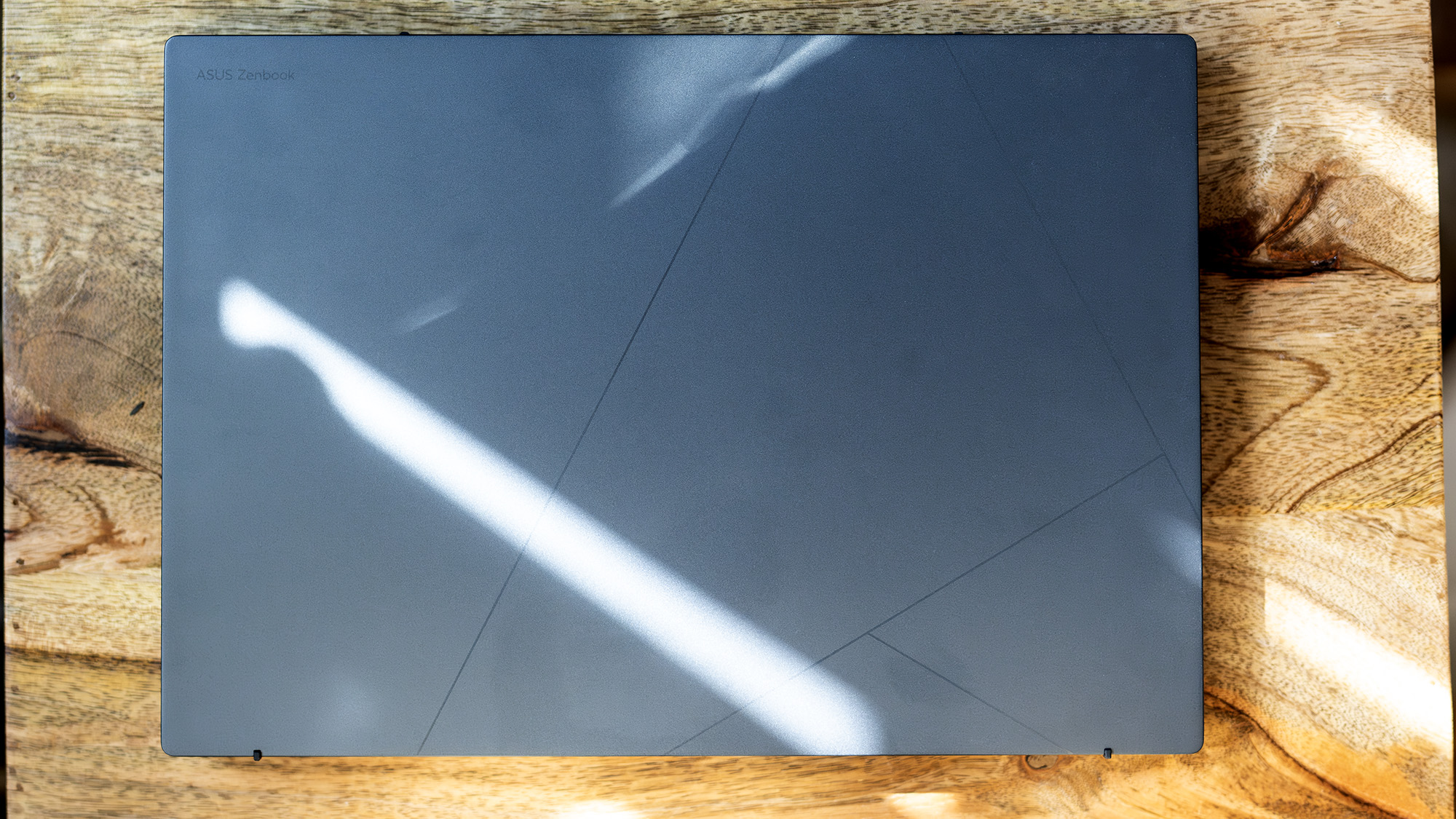
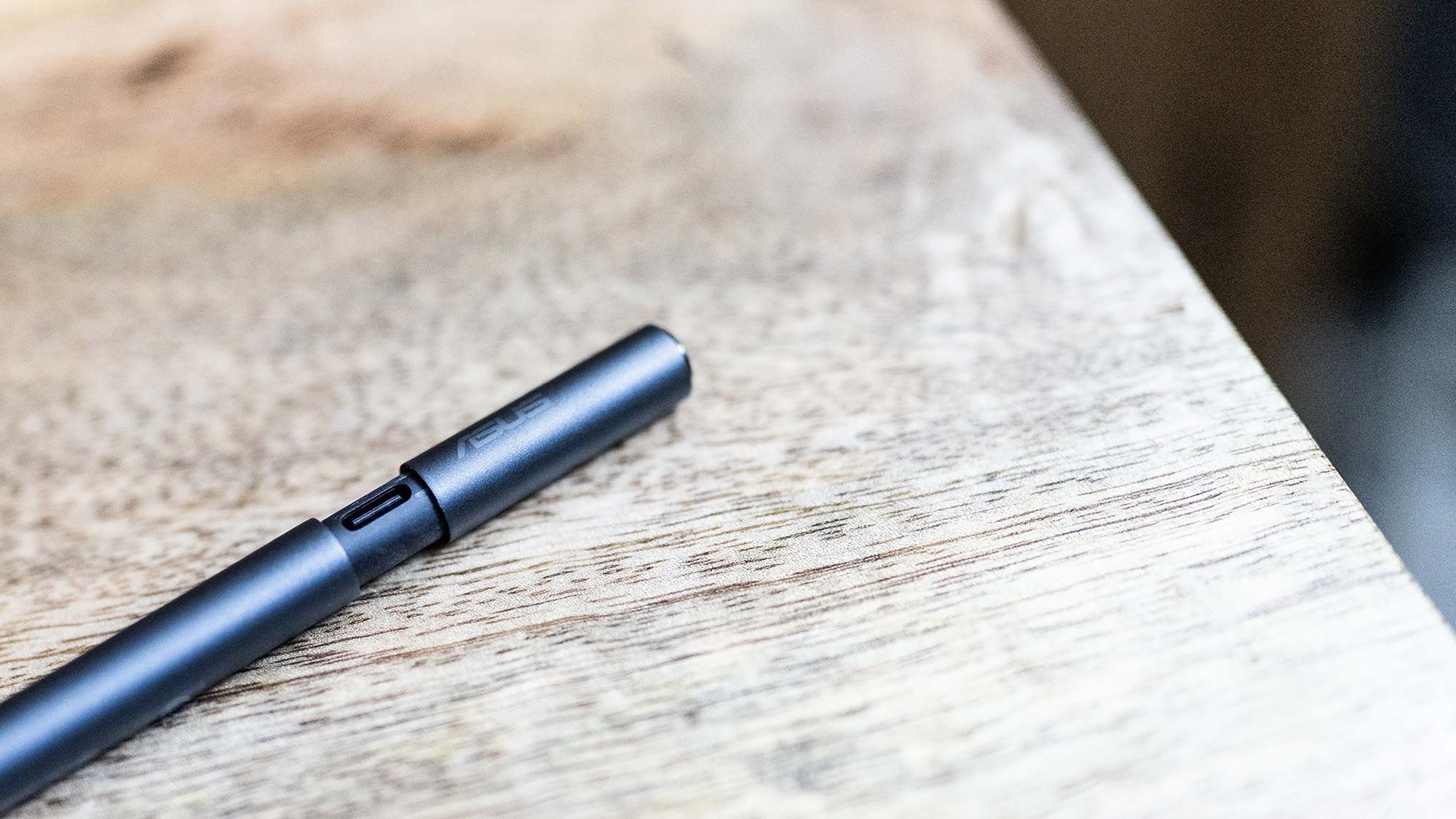

Specifications
Reasons to buy
Reasons to avoid
✅ You need portable dual-screen productivity: The standout feature is the dual 14-inch OLED displays that transform your workflow.
✅ You value flexibility: The detachable keyboard and multiple screen configurations let you adapt your setup to different environments and tasks.
❌ Graphics-intensive work is your priority: With no discrete GPU, this isn't ideal for demanding 3D rendering or video editing tasks.
❌ You're looking for value: At $1,799.99/£2,099, this is a premium priced device.
🔎 ASUS ZenBook Duo (2025) remains the ultimate portable dual-screen setup for creative professionals, though the continued reliance on integrated graphics holds it back from true perfection. ★★★★½
What you need to know: Do you find yourself constantly switching between apps or wishing for more screen real estate while working on the go? This laptop solves that problem brilliantly. The 2025 refresh of the ZenBook Duo maintains the innovative dual-display design while upgrading to the latest Intel Core Ultra processor.
Design: The primary and secondary 14-inch OLED displays both offer 2.8K resolution (2880x1800) with 120Hz refresh rates and touch functionality. In our tests, they displayed 100% sRGB coverage, 96% Adobe RGB, and 98% DCI-P3 color gamuts with 366 nits peak brightness. The detachable keyboard allows multiple configurations, from traditional laptop setup to dual-screen workstation.
Performance: The Intel Core Ultra 9 285H processor delivers excellent CPU performance, outperforming the M4 MacBook Air in multi-core tests. However, the reliance on integrated Intel Arc Graphics means this isn't a powerhouse for GPU-intensive tasks, which is the one disappointing weakness in an otherwise stellar package.
Battery life: Our tests showed approximately 10 hours and 16 minutes of battery life when using a single screen, which is two hours less than the previous generation but still enough for a full workday. Expect reduced runtime, though, when using both displays simultaneously.
Price: At $1,799.99/£2,099, this isn't a budget option, but the dual-screen functionality and premium build quality justify the investment for the right user.
Read more: Asus ZenBook Duo (2025) review
Attributes | Notes | Rating |
|---|---|---|
Price | Premium pricing, justified by unique features | ★★★★ |
Design | Innovative dual-screen configuration | ★★★★★ |
Performance | Excellent CPU performance | ★★★★ |
Battery life | Good for single-screen use, reduced with dual displays | ★★★★★ |
| Row 4 - Cell 0 | Row 4 - Cell 1 | Row 4 - Cell 2 |

"If you like to show off in a coffee shop then this is the perfect machine. It will undoubtedly draw admiring glances and penetrating questions from fellow laptop connoisseurs."
Also tested
While the laptops above get our ultimate nod of approval as fantastic laptops for graphic design, there are more laptops worthy of your attention. If none of the above quite tickle your fancy, we've also tested all of the below laptops and will happily recommend them as great laptops for graphic design, whether you're a seasoned pro or just starting out.
MSI Creator A16 AI+
With an NVIDIA GeForce RTX 4070 laptop GPU under the hood, this AI-enabled laptop offers a lot of creative juice. It excels at high-intensity graphic design work, but our reviewer felt that price was a barrier – most designers particularly those working in 2D, can get better value elsewhere.
Read our 4.5-star review.
ASUS Zenbook 14X OLED
With a 14-core Intel i9 processor, an NVIDIA GeForce RTX 3050 graphics card and 32GB of RAM, this ASUS model combines MacBook Pro-level power with a sub-£/$1,500 price tag. Bonus points for the gorgeous OLED screen, although battery life can't quite keep up with the leaders.
Read our 4-star review.
ASUS ProArt Studiobook OLED (H7604)
This ProArt Studiobook is a beast of a laptop, perfect for creators thanks to the beautiful OLED screen, power and handy customisable dial. It can handle any creative task you throw at it, perfect for power users, but if you have a lighter workflow you may not need all the power it has to offer.
Read our 4.5-star review.
FAQs
What laptop specs do I need for graphic design?
For a good Windows laptop, you’ll want a modern processor from either Intel or AMD: ideally, an 13th gen Intel or AMD Ryzen 7000 mobile processor. When it comes to MacBooks, Apple has its own chips – M1, M2, M3 and M4 – which perform brilliantly as well; the higher the number, the more advanced the processor. When it comes to RAM, the more you have, the better, especially if you want to multitask. We suggest a minimum of 8GB RAM, but ideally 16-64GB if your budget can stretch to it.
For Windows laptops, a dedicated graphics card is also worth thinking about, especially for graphically intensive workloads. However, these can up the price of a laptop considerably, and modern integrated GPUs are good enough for day-to-day graphic design use. For any heavier usage, though, a discrete graphics card is a must.
Are laptops for graphic design expensive?
Yes, laptops designed specifically for graphic design and other demanding creative work tend to be more expensive than basic laptops. That's because they require powerful hardware such as high-end processors, dedicated graphics cards, ample RAM, and fast storage to run software such as Photoshop, Illustrator and InDesign smoothly. Also, for colour work, you'll need a high-res display that offers good colour accuracy and wide colour gamuts.
However, there are also more affordable options around the $1,000 price range that can handle graphic work reasonably well for those on tighter budgets, although they may not offer the same level of performance or features as the higher-end models. See our best MacBooks for college for all your Apple options.
What operating system is best for graphic design?
Both Windows and macOS are viable options, but macOS is generally preferred by many graphic designers due to its tight integration with Adobe's Creative Cloud apps and color management tools. However, Windows laptops offer more choice in terms of hardware configurations.
How much RAM do I need for graphic design?
At least 16GB RAM is recommended for graphic design work, as graphic apps can be very memory-intensive. 32GB or more is ideal for working with large, complex files.
What display resolution and color accuracy should a laptop have for graphic design?
Look for displays with at least 1920 x 1080 resolution, although higher resolutions like 4K (3840 x 2160) are obviously better. A wide color gamut covering 100% sRGB and high color accuracy (Delta E <2) is crucial for color-sensitive work.
What we look for
Any graphic designer will know that the three pillars of success for a laptop are a glorious display, enough RAM and decent battery life. Those are the three elements we start with when selecting laptops for this list. How much power you actually need will be down to workflow. If you are working solely in vector software, even if you add in some photo editing you're unlikely to need all the power the most powerful laptops have to offer. But we know creative workflows are getting broader, and with AI capabilities entering even the lightest software now, you might need more than the basics from a laptop.
See more display and power specifics in our how we test section below.
We also know budgets are a big deal. So we've included options at a range of price points and suiting different workflows. You won't find a decent graphic design laptop for the price of a true budget laptop, and we're not here to pretend any of those are suitable. So you'll need to spend a bit more than the lowest on the market – or go refurbished.
How to choose
When choosing a laptop for graphic design, you’ll want a laptop with a lot of power. Graphic design work can be pretty intensive and so you’ll need a laptop that can properly support that and run your host of creative tools.
If you’re frequently on the go and do your work outside the home, you’ll want to strike that proper balance between power and portability. You may have to sacrifice some power to get a laptop that is thin and light enough to throw in your backpack. If you plan to rarely or never tote your computer then we recommend focusing on purchasing a heavier, more powerful laptop.
The next thing you’ll want to consider is what operating system you prefer. MacOS used to be the staple of creative professionals, but nowadays it really doesn’t matter if you use Mac or Windows - both can do the job for graphic designers just fine. It’s up to personal preference, and that shows among the Creative Bloq team, where some of us prefer Mac laptops, while others lean towards Windows.
Finally, budget can be a huge factor in laptop purchases. Many of the laptops in this guide can be quite expensive. If budget is no constraint we recommend the MacBook Pro (M4 Pro), but if you’re a student or just starting out, the the MacBook Air (M1) will give you the most bang for your buck.
How we test
Benchmarking
As explained in our how we test laptops for graphic design article, we run extensive benchmark tests, which include using real graphic design software to run real projects such as Adobe Photoshop, Cinema 4D, Adobe Illustrator and more, depending on the reviewer, their specialism and the laptop's intended user base.
The minimum laptop specs we look for across tests are as follows:
Geekbench 6
- CPU multi-core: At least 10,000
- GPU OpenCL: At least 70,000
Cinebench 2024
- CPU multi-core: At least 800
- GPU: At least 7,500
PugetBench
- Photoshop: 6,000
- Premiere Pro: 6,000
PCMark 10:
- Main test: 6,500
- Digital Content Creation: 7,500
Handbrake: Encoding a 10-minute, 34-second animated 4K video: Under 5m30s
But choosing the laptops for this guide is about so much more than benchmarking – it's hard to put a firm number due to factors like workflow and app use. We put our laptops through real world tests, and make sure every single one is fully tested by our expert reviewers.
Displays
When it comes to testing laptops for graphic design, we look for a good, high resolution screen, assessing pixel density, colour accuracy, contrast and more, to decide how well it performs for graphic design.
As a guide, for colour we're looking for 100% Adobe RGB and DCI-P3 accuracy. Resolution should be a minimum of a Full HD 1920x1080 display – lower resolution paired with larger screens will make your display look blurry. We love OLED screens, but high res IPS screens are great for graphic designers as they can be super- colour accurate. See more about displays in our laptop display explainer guide.
On the occasion we have been unable to run a specific test (because we reviewed the laptop at a time when our process was slightly different), we look to our sister sites for their results.
Storage. build and battery life
Storage is arguably a little less critical, as well-specified laptops now come with fast PCIe SSDs. But we still test sequential throughput and random access to make sure that nothing unusual is going on.
We also assess ergonomics, build and usability, including keyboard quality, chassis rigidity, trackpad response and more to build up a practical picture of how well a laptop performs in the real world rather than merely benchmarks.
Battery life is important for any laptop and it's also a metric by which different models can differ dramatically, both from each other and from the manufacturer claims. It's also not equally important to all creatives depending on where they do most of their work. We test battery by running creative apps, streaming, changing the brightness on screen and more to see how long the battery will last. A reasonable amount is about a work day (eight hours), but this is effected by power and more so you'll need to balance your preferences (the MacBook Pro and Air are particularly impressive for battery, with the Pro lasting 10 even with a super-heavy workload).
Get the Creative Bloq Newsletter
Daily design news, reviews, how-tos and more, as picked by the editors.

Erlingur is the Tech Reviews Editor on Creative Bloq. Having worked on magazines devoted to Photoshop, films, history, and science for over 15 years, as well as working on Digital Camera World and Top Ten Reviews in more recent times, Erlingur has developed a passion for finding tech that helps people do their job, whatever it may be. He loves putting things to the test and seeing if they're all hyped up to be, to make sure people are getting what they're promised. Still can't get his wifi-only printer to connect to his computer.
- Tom MayFreelance journalist and editor
